The FDA has cleared Johnson & Johnson’s Covid-19 vaccine for emergency use in the US.



This site is made possible by member support. 💞
Big thanks to Arcustech for hosting the site and offering amazing tech support.
When you buy through links on kottke.org, I may earn an affiliate commission. Thanks for supporting the site!
kottke.org. home of fine hypertext products since 1998.
Entries for February 2021
Need to generate some 3D blobs? Use this little web tool.
The Projection Booth
Projection is a short film by Joseph Holmes of clips from 50 different films that take place in movie theater projection rooms. This supercut was made to accompany Holmes’ series The Booth, a collection of photos from 2012 that document the disappearing/changing movie theater projection rooms.
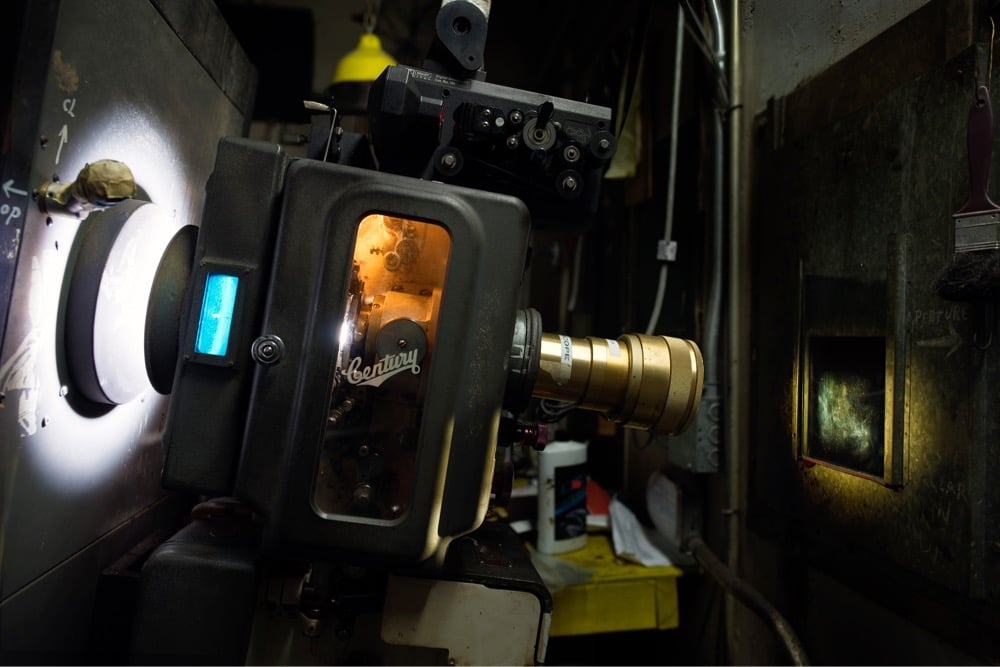
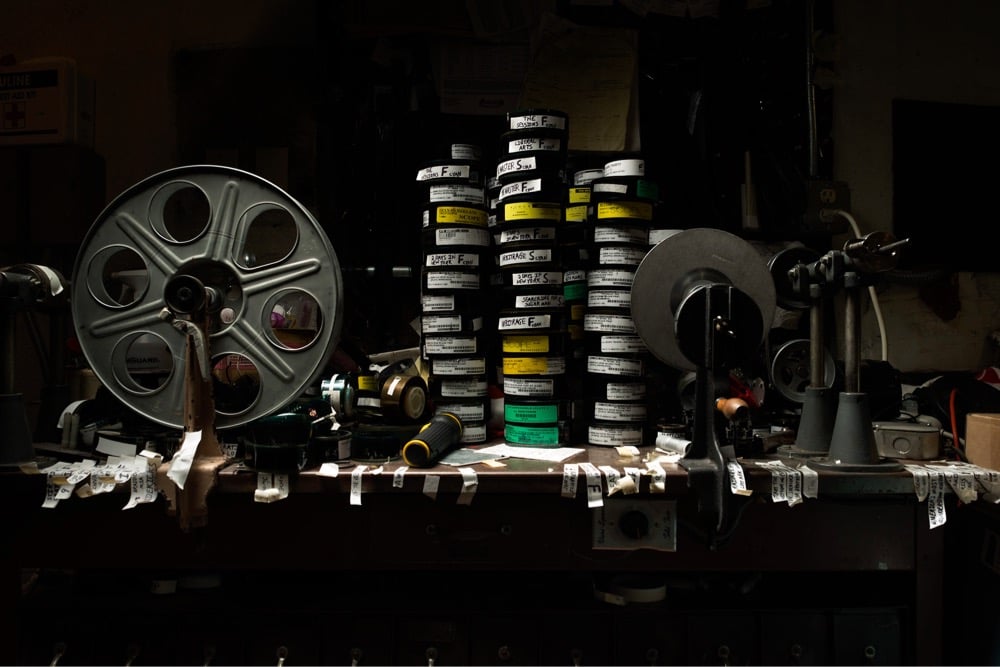
The UX On This Small Child Is Terrible. “This Small Child won’t open its mouth for a toothbrush, but won’t close it during my cousin’s wedding ceremony. It’s as if this Small Child was not designed with accessibility in mind.”
Andy Works is making aesthetically bold iOS apps that prioritize “play, aesthetics, and quality-of-life over efficiencies”. So far they’re doing simple apps: timer, calculator, weather.
The Competitive Quartet
Salut Salon is a German musical quartet that plays classical music with a “passionate virtuosity, instrumental acrobatics, charm and a great sense of fun”. For a little taste of their vibe, check out this video of the four of them playing Vivaldi’s Summer with a mock competitive spirit that escalates with increasingly outlandish & impressive performances. This article calls Salut Salon “the Harlem Globetrotters of piano quartets” and that’s pretty accurate. (via @M10MacTen)
A Seven-Volume Book Series of the Complete Works of Hilma af Klint


Abstract art pioneer Hilma af Klint created hundreds of artworks during her lifetime, and a new seven-volume book series is celebrating that work in a big way: Hilma AF Klint: The Complete Catalogue Raisonné: Volumes I-VII. The complete set is available for preorder and ships in November, but you can get the first three volumes right now. (via colossal)
Type in Motion - The SF Symphony’s Dynamic New Look

Design studio Collins has created a new brand identity for the San Francisco Symphony that uses type in a playful, almost musical way. This brief video demonstration is worth 1000 words:
Even better, you can experiment with your own type and music with the Symphosizer web toy. I made this (to the beat of Daft Punk):

(via @dkhamsing)
Hiking Is an Ideal Structure for Friendship. “The whole activity of walking in the woods is very conducive to having a conversation.”
The Earliest Globe to Show the Americas May Have Been Made by Leonardo da Vinci in 1504
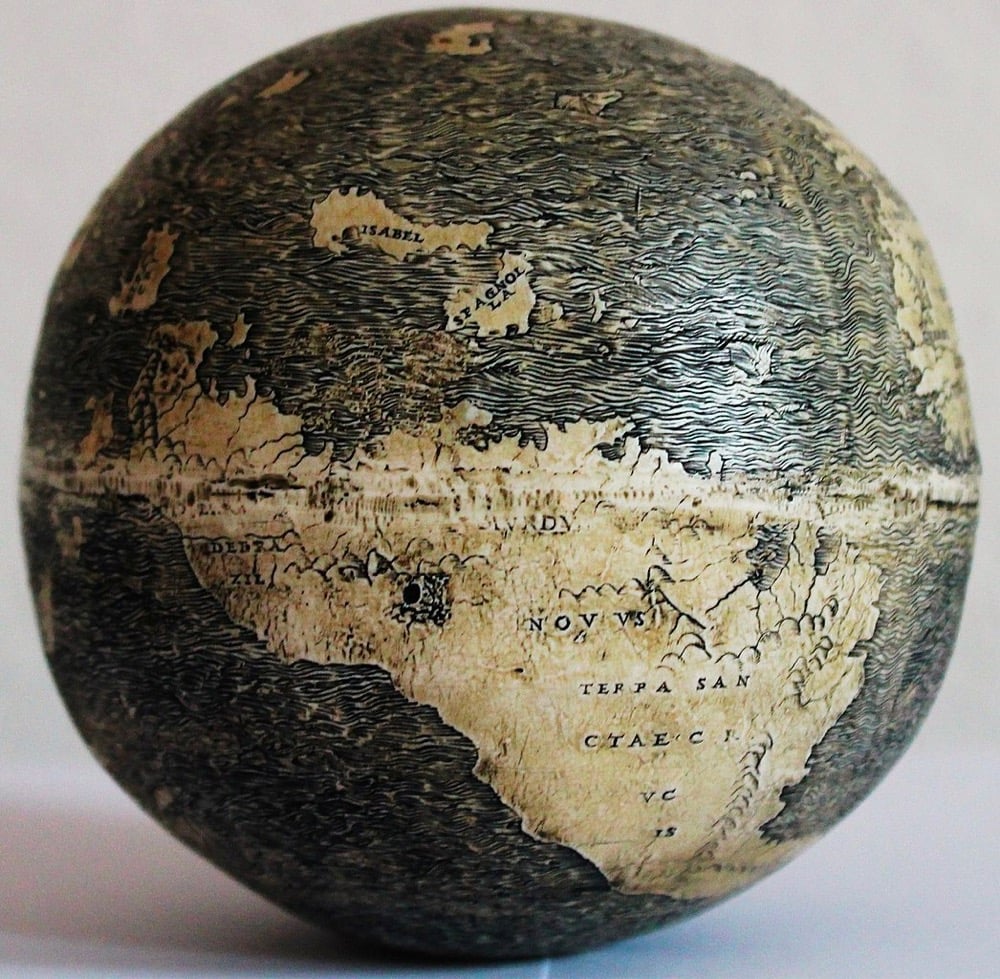
The Ostrich Egg Globe, made in/around 1504, is the earliest-known European globe to depict the Americas. And there’s evidence that it was made by Leonardo da Vinci. Open Culture has the story:
Missinne, a real estate developer, collector, and globe expert originally from Belgium, discovered the globe in 2012 at the London Map Fair. It was purchased “from a dealer who said it had been part of an important European collection for decades,” and its buyer and owner remain anonymous. After the globe appeared, Missinne “consulted more than 100 scholars and experts in his year-long analysis,” putting “about five years of research into one year,” says Sander, calling the research “an incredible detective story.”
Missinne’s investigation seems to substantiate his claims that the globe was made by Leonardo or his workshop. The evidence, some of which you can find on the Cambridge Scholars Publishing site, includes a 1503 preparatory map in da Vinci’s papers; the presence of arsenic, which only Leonardo was known to use at the time in copper to keep it from losing its lustre; “The use of chiaroscuro, pentienti, triangular shapes, the mathematics of the scale reflecting Leonardo’s written dimension of planet earth”; and a 1504 letter from Leonardo himself stating, “my world globe I want returned back from my friend Giovanni Benci.”
As with all things newly attributed to Leonardo in recent decades, there’s disagreement about this claim. You can read about the evidence collected by Stefaan Missinne, the discoverer of the globe and primary champion of its Leonardo connection, and decide for yourself. My brief, amateur take: if the first point in your analysis of a connection between this globe and Leonardo da Vinci is based on Salvator Mundi, which itself has disputed authorship and all but disappeared after its 2017 purchase, you’ve chosen a tough path towards persuasion.
Missed this when it came out last summer. “The first hopeful book about climate change, The Future Earth shows readers how to reverse the short- and long-term effects of climate change over the next three decades.”
Grade-school math homework asks if a presumed semi-circle has two right angles or not. The answer is not that straightforward.
The Secret Message Encoded in the Parachute of the Mars Perseverance Rover
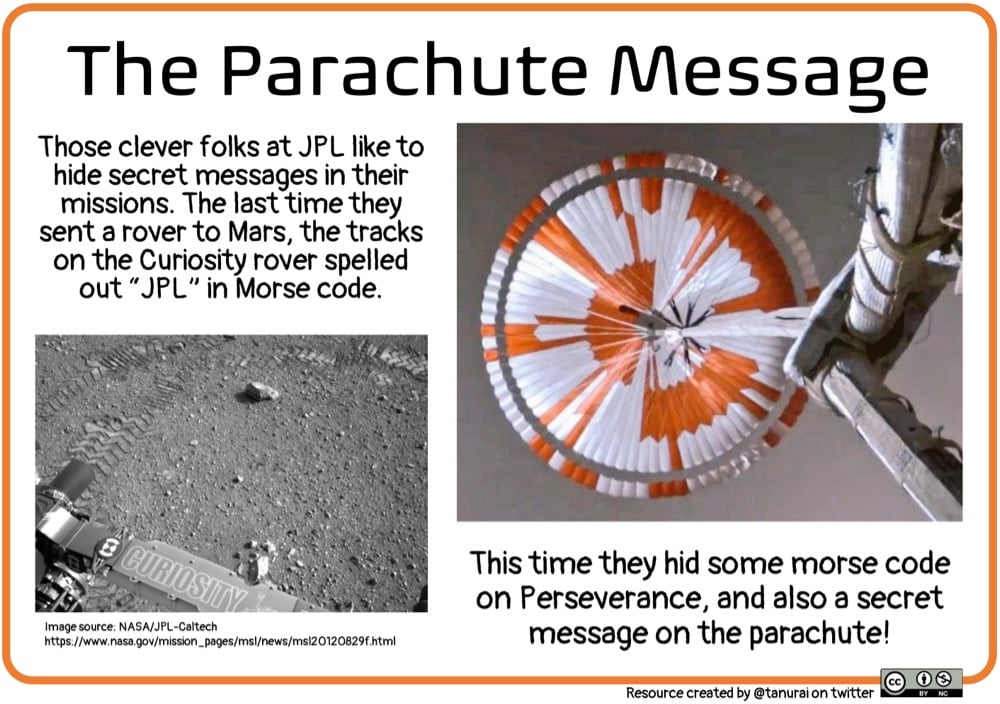
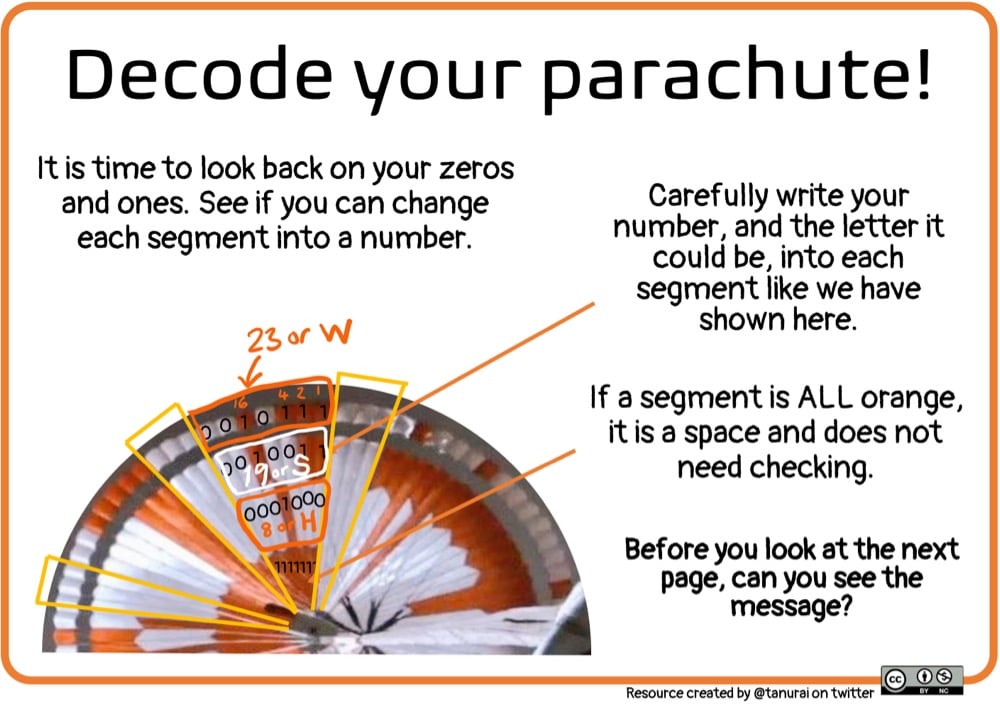
NASA engineers encoded a secret message in the parachute the Perseverance rover used to slow its descent to the surface of Mars. Tanya Fish provided a handy guide to decoding it on Twitter and as a PDF available on GitHub.
Clever “Climate Crisis” Typeface Has Several Weights Based on Arctic Sea Ice Extent
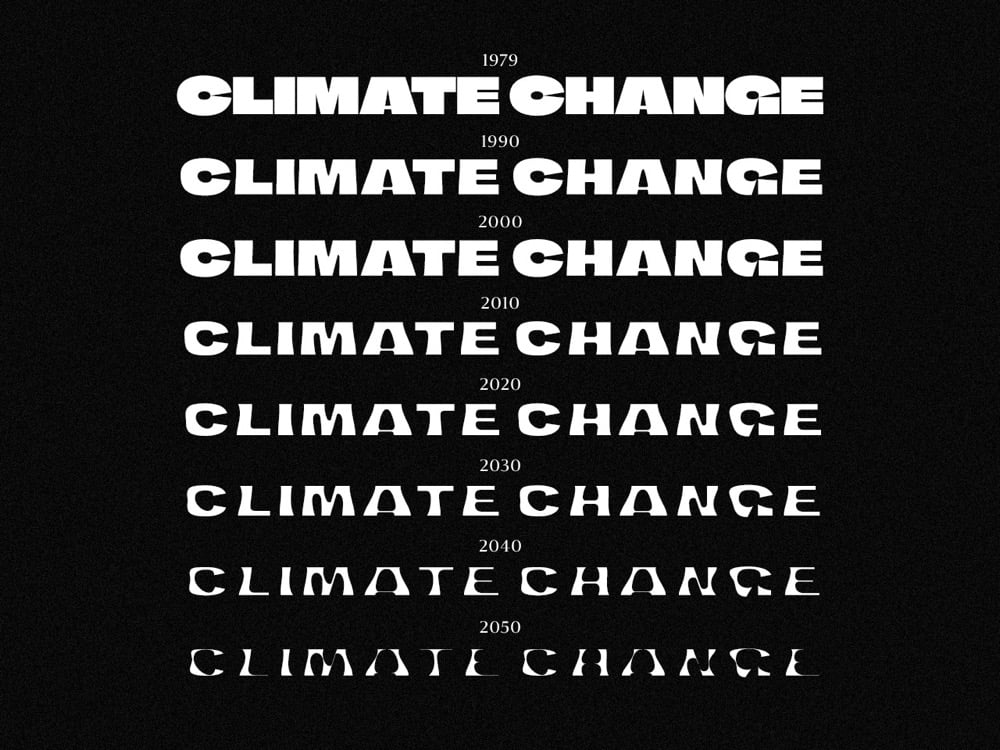
Finnish newspaper Helsingin Sanomat has released a free typeface called Climate Crisis that can help designers and the media visualize the urgency of the climate crisis.
The font is intended to be used by anyone who wishes to visualize the urgency of climate change. Especially the media can use it to enhance its climate-related storytelling through illustrations and dramatizations. Newspaper Helsingin Sanomat is at the moment using the font to draw attention to its climate-related stories.
The typeface has seven weights corresponding to data & projections of the minimum extent of the Arctic sea ice from 1979 to 2050. As you can see in the graphic above, the type gets thinner and thinner as the years pass. (via print)
Really interesting piece about the history of Black Americans’ participation in beer brewing and consumption. “Beer, as it appears in American pop culture, is hilariously white.”
The Typewriter
A few days ago, I featured Ariel Avissar’s compilation of giant moons from movies and over the weekend, he sent me his most recent supercut: The Typewriter. This brisk & artfully concocted 2-minute video features dozens of typewriters being used in TV & movies, including The Shining, Mad Men, Adaptation, Barton Fink, Citizen Kane, All the President’s Men, and even Stephen J. Cannell (80s kids know).
A new FDA analysis indicates that “the one-shot coronavirus vaccine made by Johnson & Johnson provides strong protection against severe disease and death from Covid-19”. More good vaccine news.
Need to generate some blobs? Use this little web tool.
Your Kids Aren’t Too Old for Picture Books, and Neither Are You. “With remarkable economy, they excel at the twin arts of visual and textual storytelling.”
Flim, an Intelligent Movie Screenshot Search Engine
Flim is a movie search engine currently in beta that returns screenshots from movies based on keywords like “clock” or “tree”. Like so:
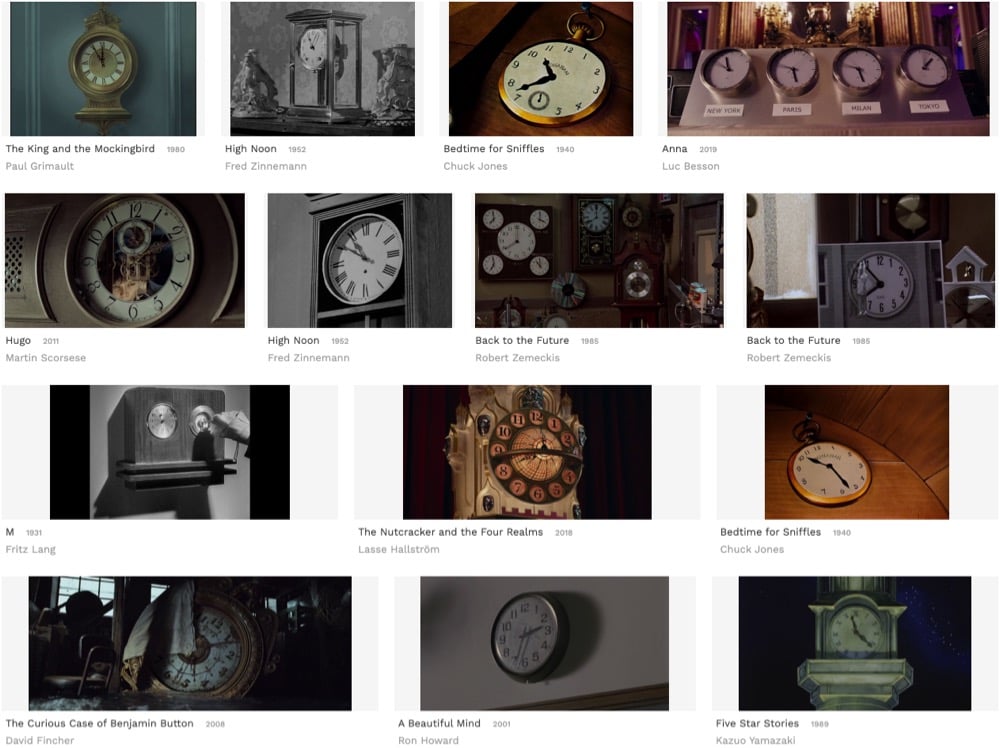
You can filter results by things like genre, year, and film ratio. You can search by color and within movies, e.g. “tuxedo” in Titanic:
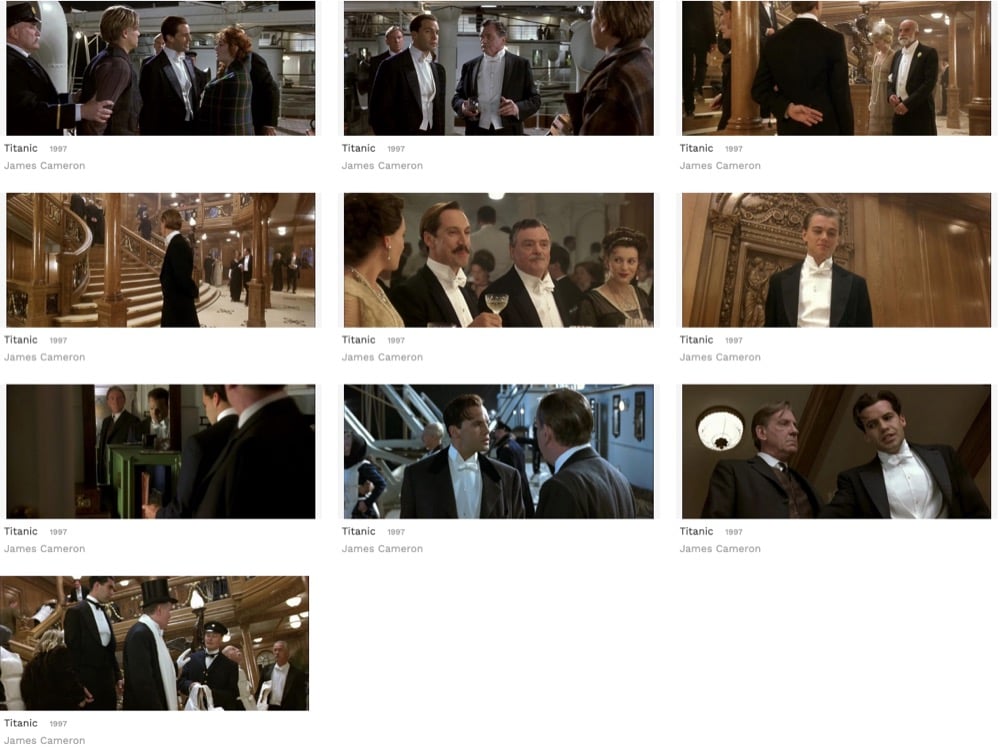
I would love for the screenshot detail pages to include timecodes — it would make this an amazing tool for creating supercuts, film analysis videos, and other sorts of media. Imagine how much easier Christian Marclay’s job would have been with “clock” and “watch” searches on Flim. (via waxy)
Radiohead. Ballet. Together at Last.
A pair of dancers from the Polish National Ballet perform a dance to Reckoner by Radiohead, choreographed by Robert Bondara. This is from a longer performance featuring a number of Radiohead songs. The whole performance briefly popped up online over the weekend but is gone now. The video above is the only clip I could find on YouTube — hopefully the whole thing will be available again at some point.
Self-Medicating Media: Relax in Online Ambiance Rooms
From the NY Times on The Soothing, Digital Rooms of YouTube, a genre of video that pairs animated scenery with ambient soundscapes:
The genre is a close cousin of A.S.M.R. (autonomous sensory meridian response) videos, which are meant to evoke the pleasant brain-tingling sensation that some people experience when they hear sounds like hair brushing, nail tapping and soft whispers.
But ambience videos are differentiated, their creators say, by their purpose — not necessarily to give the tingles, but to relax and soothe a viewer by means of an immersive experience.
These videos all have names like Underwater Study Room, Cozy Cabin in the mountains, Jazz Bar in Paris, and Forest Sounds. They’re related to slow TV and other meditative videos I’ve posted over the years (e.g. the idling Arctic icebreaker & Tibetan singing bowl music. In the article, Helle Breth Klausen calls this genre “self-medicating media”.
Onboard Camera Views from Perseverance Rover’s Descent & Touchdown on Mars
Just a few days after the Perseverance rover successfully touched down on Mars, NASA has released onboard video from the descent and landing from multiple perspectives. I watched this with my kids last night and all three of us had our mouths hanging open.
The real footage in this video was captured by several cameras that are part of the rover’s entry, descent, and landing suite. The views include a camera looking down from the spacecraft’s descent stage (a kind of rocket-powered jet pack that helps fly the rover to its landing site), a camera on the rover looking up at the descent stage, a camera on the top of the aeroshell (a capsule protecting the rover) looking up at that parachute, and a camera on the bottom of the rover looking down at the Martian surface.
After watching it again just now, I am struck by two things:
- Sometime in my lifetime, live broadcasts from Mars will likely become commonplace. There will be dozens or hundreds of Mars webcams you can pull up on whatever the 2052 internet equivalent is. It will be amazing how boring it all is. (Or perhaps it’ll be boring how amazing it all is.)
- That humans landed on the Moon in 1969 was an incredible feat, but a close second is that the first steps were broadcast live from the Moon’s surface to everywhere on the Earth. Unbelievable.
Can’t wait to see more from Perseverance once the science program gets cranking.
Draw an Iceberg and See How It Will Float
Glaciologist Megan Thompson-Munson recently posted an “unofficial but passionate petition” for scientists and science publications to start drawing icebergs correctly.
While it’s true that only ~10% floats above the surface of the water, the “classic” orientation is unstable and would actually not be found in nature. An elongated iceberg would not float on its head, but instead on its side.
Inspired by her plea, Joshua Tauberer made a cool little iceberg simulator called Iceberger — you can quickly draw an iceberg and see how it will float. Here are a couple of weird ones I drew:
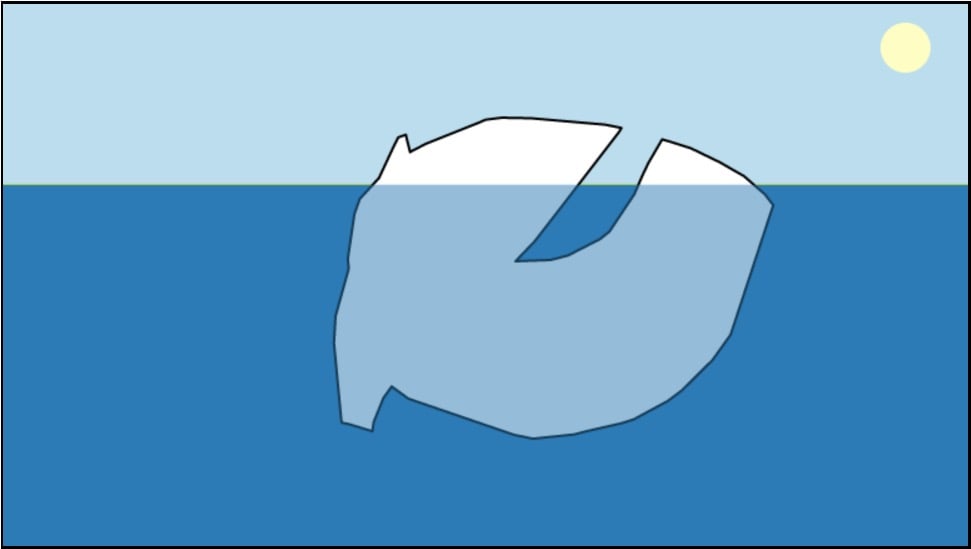
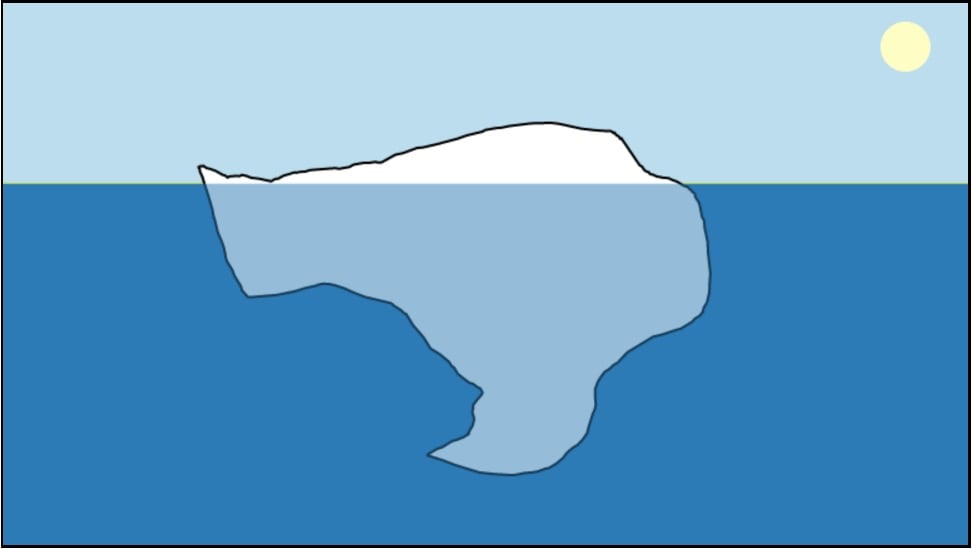
I would love to see a gently gamified version of this where you compete to draw the slowest-orienting icebergs or icebergs closest to their stable orientation. Would be similar to some of the puzzles in Brain It On!
Update: See also Iceberger Remixed, an iceberg simulator with additional features.
Simone Ellin tracked down the now-adult kids who bullied her in school. “Being able to zoom out and get some perspective after all of these years underscored that we can never really know what’s going on in other people’s lives.”
On the toll of lockdown when you live alone. “Long-term social isolation is as bad for your health as smoking 15 cigarettes a day. What has the last year meant for those who don’t share their homes?”
Finding All the Source Images for the Sgt. Pepper’s Album Cover
The iconic album cover for The Beatles’ Sgt. Pepper’s Lonely Hearts Club Band is a collage of images of dozens of people — mostly famous, mostly men — arranged as though they’re standing in a group behind the band. A list of the people depicted on the cover (including Marilyn Monroe, Edgar Allan Poe, Karl Marx, Shirley Temple, and Fred Astaire) can be found on Wikipedia but Chris Shaw went a step further and tracked down the exact source images for each one of people & objects shown.
The collage was designed by Peter Blake and his wife Jann Haworth, and the cut-outs were assembled in Michael Cooper’s London photographic studio. Michael and his team toiled hard to construct the ‘cast of extras’, using a mix of photos sourced from the BBC Hulton Picture Library, images from private collections, waxworks and personal artifacts, including a gnome owned by Ringo Starr.

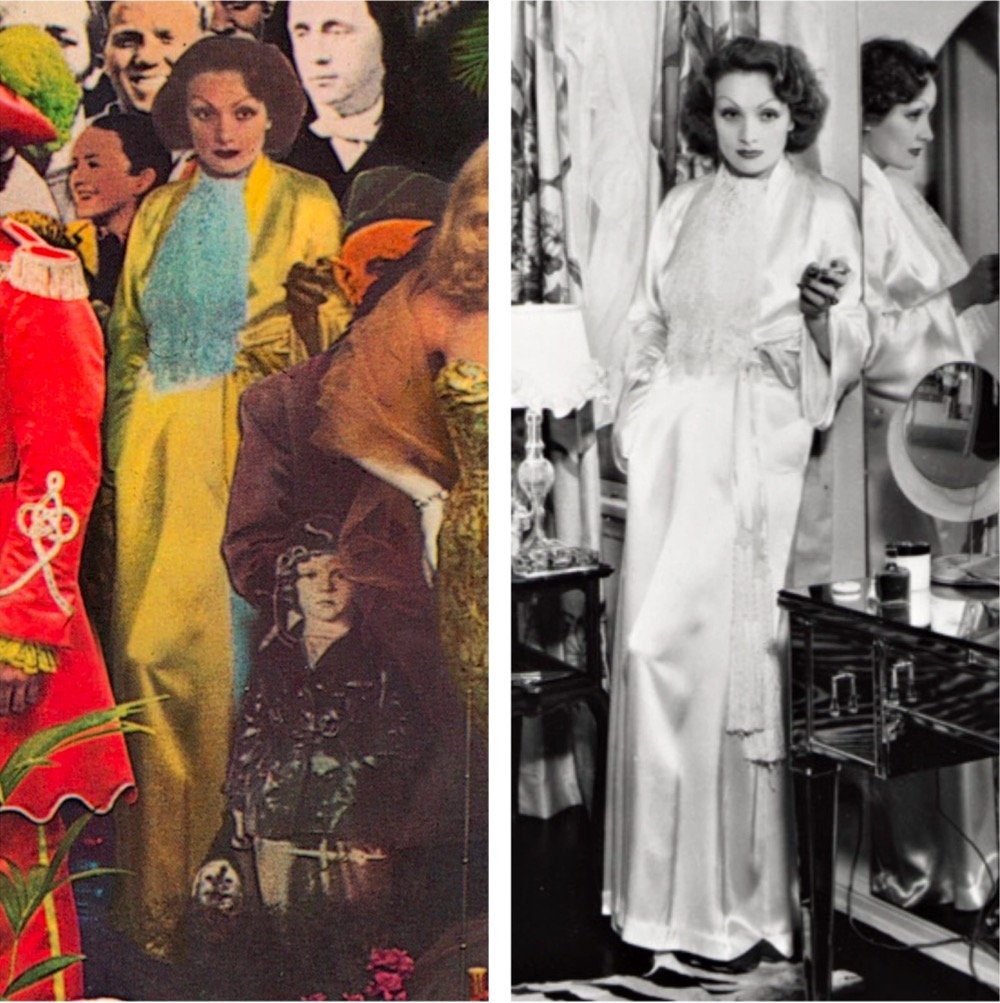

You so rarely get to see the raw materials used for design objects, so this is a real treat. (via waxy)
This is not your usual architectural criticism. “This is a love story. And, like every love story, it’s also a death story.”
Daft Punk Have Broken Up
Musical duo Daft Punk have called it quits after 28 years. They said goodbye with the video embedded above. This is so far from the worst thing that has happened in the past year but I am unexpectedly emotional about this. I still remember quite vividly hearing their music for the first time and I was hoping for more to come. So much of what they’ve created continues to resonate with me and, gosh, I can’t believe it’s over. Thank you, gentlemen.
Over 500,000 Americans have now died from Covid-19. “More Americans have perished from Covid-19 than on the battlefields of World War I, World War II and the Vietnam War combined.”
The Otherworldly Sounds of the Long String Instrument
Here are a pair of videos of Ellen Fullman playing the Long String Instrument, an musical instrument with up to 100-foot-long strings that Fullman has developed over the past 35+ years.
These ghostly, ethereal sounds are made by Fullman rubbing the strings with rosin-coated fingers; you can read more about her process in The Guardian:
Its sound recalls Indian raga, with harmonies sliding over one another. Fullman says playing it “can be an ecstatic feeling, a floating sensation. Music is bigger than me: there are pitch relationships, shapes of notes beautiful beyond the level of human expression. I like that feeling of being a conduit. I don’t like egotistical thrashing. I like trying to give a gift.”
The strings are connected to wooden resonators that act like the body of a guitar to amplify the sound. To bring it out further, Fullman rubs her fingers with rosin, the same substance used on bows. In effect, she turns herself into a human bow. The strings are 2cm apart and she can have up to 28 on each of the two sides of the instrument: “The number is only limited by the length of my arms: 60cm.”
Best little detail about Fullman from that piece: she was “born in Memphis and kissed by Elvis as a baby”.
Aside from the videos, you can find music she’s created with the Long String Instrument on Spotify and other streaming services. I would love to see her perform in person sometime, when such things are permitted again. (via @tedgioia)
For his latest recipe, Kenji López-Alt hacks scrambled eggs. “The melted butter forms a rich sauce, and a cornstarch slurry keeps the eggs creamy.”
Ian McKellan Recites the “Duck Tales” Theme Song
Hunter Davis does an amazing impression of Ian McKellen and used it to recite the lyrics to the Duck Tales theme song as if he were Gandalf.
Somehow I have never seen this video before (it’s from 2009!) and it made me laugh so hard my stomach hurt. I watched it three times in the row but had to stop to post this. See also If Ian McKellen performed “Baby Got Back”, which is really good as well but doesn’t contain the phrase “it’s a duck blur” so 2nd place. (via laura olin)
What Our Food Reporters and Editors Make When They’re Too Tired to Cook. These overachieving folks have a funny definition of “too tired to cook”. Risotto?? Where’s the Campbell’s soup, 9 pieces of string cheese, or popcorn + wine?
String Quartet Performs Billie Eilish’s bad guy
Over the past two decades, musical group Vitamin String Quartet has covered the songs of dozens of musical artists and groups, from Jimi Hendrix to PJ Harvey to Eminem. In the video embedded above, they cover bad guy by Billie Eilish, apparently one of several covers that appears in Bridgerton (haven’t seen it). The group’s music has also appeared in Westworld, most notably Radiohead’s Motion Picture Soundtrack. And, I just this second made this connection: VSQ also did the Strung Out on OK Computer album, a longtime staple of my music for working.
E.B. White on the Meaning of Democracy
In response to a request from the Writers’ War Board in the summer of 1943, in the midst of World War II, E.B. White wrote this short piece for the New Yorker.
We received a letter from the Writers’ War Board the other day asking for a statement on “The Meaning of Democracy.” It presumably is our duty to comply with such a request, and it is certainly our pleasure.
Surely the Board knows what democracy is. It is the line that forms on the right. It is the don’t in don’t shove. It is the hole in the stuffed shirt through which the sawdust slowly trickles; it is the dent in the high hat. Democracy is the recurrent suspicion that more than half of the people are right more than half of the time. It is the feeling of privacy in the voting booths, the feeling of communion in the libraries, the feeling of vitality everywhere. Democracy is a letter to the editor. Democracy is the score at the beginning of the ninth. It is an idea which hasn’t been disproved yet, a song the words of which have not gone bad. It’s the mustard on the hot dog and the cream in the rationed coffee. Democracy is a request from a War Board, in the middle of a morning in the middle of a war, wanting to know what democracy is.
My favorite line is “Democracy is the score at the beginning of the ninth.” Initially I read it as poetically referring to the first part of Beethoven’s Symphony No. 9 — which is lovely, no doubt — but upon further reflection he probably meant baseball. (via daring fireball)
Just sent out the latest issue of the @kottke newsletter in which I talk about tags. Remember tags? Still useful!
A list of the 25 greatest art heists of all time. If you’re familiar at all with the history of stolen art, the #1 and #2 heists aren’t so hard to guess.
30 Minutes of Relaxing Visuals from Studio Ghibli
This. This is the stuff. Lapping water, wind through the tall grass, patient trains, birds, rolling countryside, mountains, sleeping, castles in motion, and more calm scenes compiled from Studio Ghibli movies.
See also hundreds of Studio Ghibli backgrounds for your Zoom calls and 10 Hours of Extremely Relaxing Ocean Scenes & 40 Hours of Relaxing Planet Earth II Sounds, both from BBC Earth. (via laura olin)
The Queen’s Gambit, but for Children’s Board Games
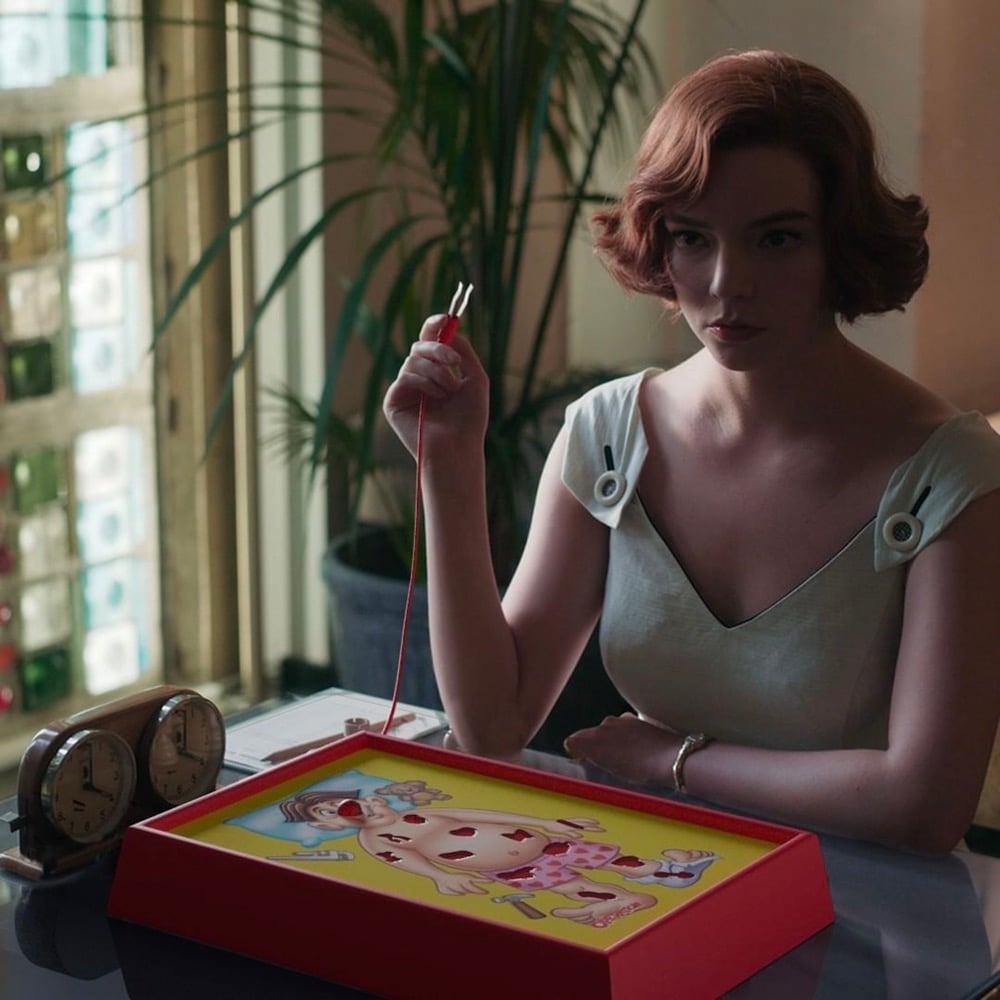
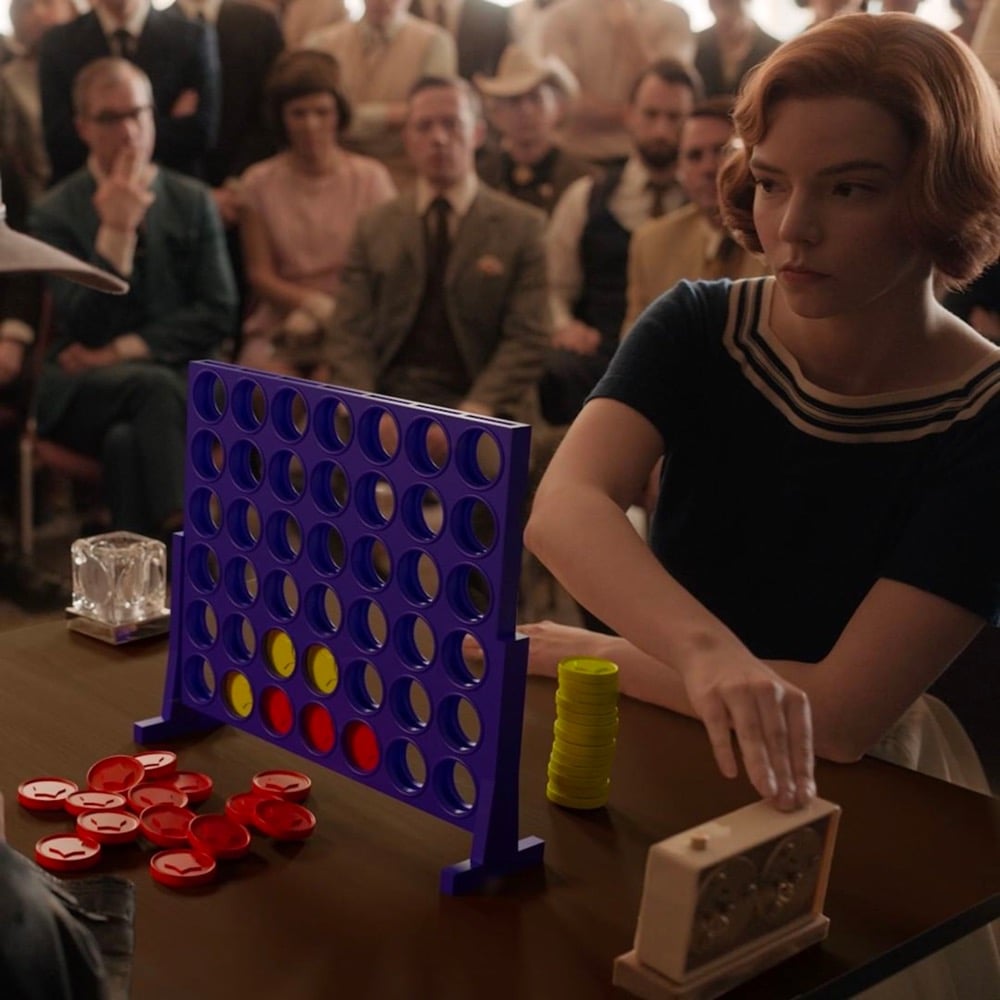
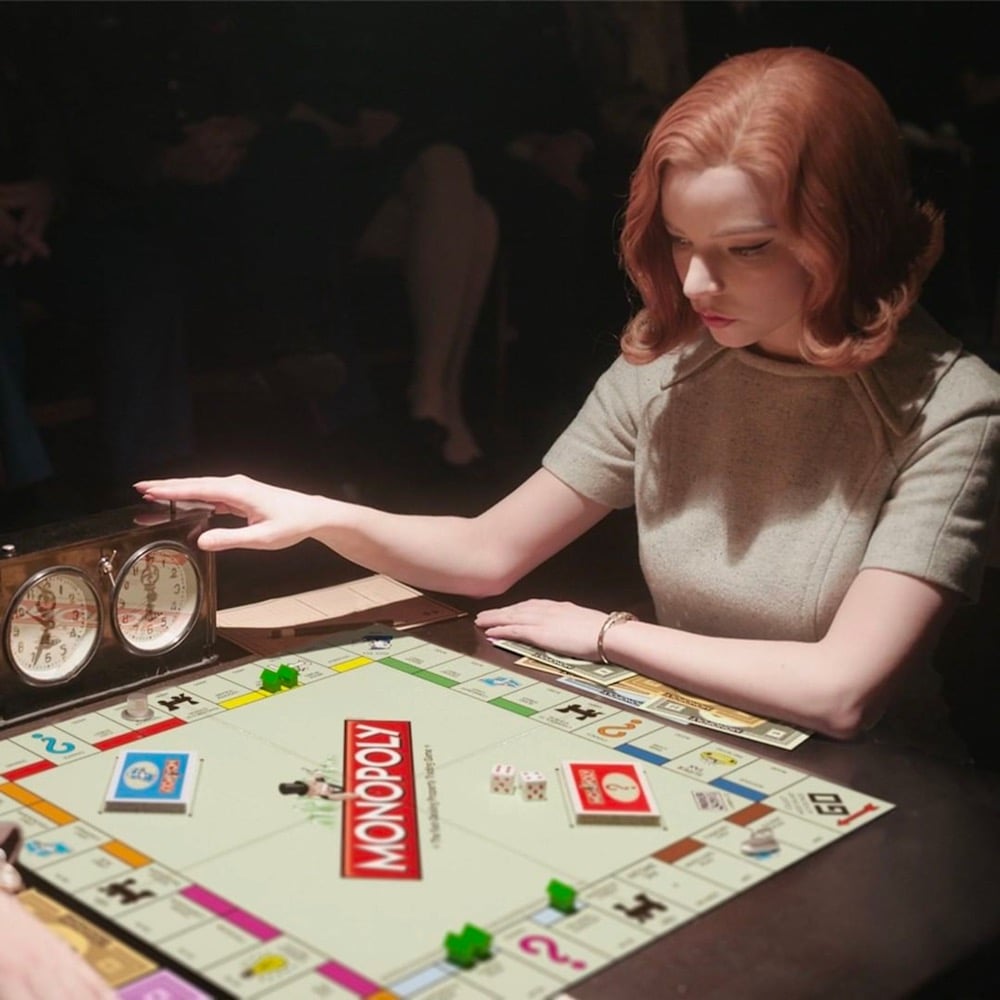
Netflix spoofed their own hit show by photoshopping Beth Harmon from The Queen’s Gambit intensely playing children’s board games like Operation, Monopoly, Connect Four, and Jenga.
Watch NASA’s Perseverance Rover Land on Mars Live
Today is the day! NASA’s latest Mars rover is scheduled to touch down on the surface of Mars at around 3:55pm EST today1 and you can follow along online. You probably know the drill by now: what you’ll be watching isn’t actually live (it’s delayed by 11 minutes & 22 seconds, the time it takes for data to reach the Earth from Mars) and there’s no video to watch…there’s just telemetry from the rover that indicates where it is and what it’s doing. But I can say having watched the Curiosity landing in 2012, it’s still super exciting and nerve-wracking.
NASA has a number of ways to watch online, including their main stream on YouTube (embedded above), en Español, the “clean feed” from mission control without commentary, and a 360-degree stream, as well as options on Twitter, Facebook, Twitch, etc. You can also watch on NASA TV or through NASA apps on your phone, tablet, or TV. The coverage starts at 2:15pm EST (find your local time) and if all goes well, things start to get exciting at about 3:38pm EST and the landing will happen around 3:55pm EST. To get ready, you can check this page for a schedule of what happens when, watch a video about what’s gonna happen, and look at this live simulated view of where the Perseverance spacecraft is now (here too). Good luck, little rover!
All times in this post (and stated by NASA in their schedules) are when we here on Earth will learn of events after the 11 minute & 22 second informational travel time from Mars is factored in. So while the Mars landing will actually occur around 3:44pm EST, we won’t know about it until 3:55pm EST.↩
The Evolution from Snurfing to Snowboarding. Sherman Poppen invented snurfing in the 60s and Jake Burton’s addition of bindings a decade later changed the game. The old snurfing/snowboarding footage in this is incredible.
A look at what caused the dangerous power shortages in Texas. “The state’s massive blackouts are the result of a failure to insure against extreme weather.”
Conservatism and Who the Law Protects
I’ve seen this quote, or ones very much like it, a few times in recent years:
Conservatism consists of exactly one proposition, to wit: There must be in-groups whom the law protects but does not bind, alongside out-groups whom the law binds but does not protect.
The original quote is from Frank Wilhoit — it’s worth reading what he wrote in full in a comment on this blog post. He begins by stating that conservatism is the only political philosophy that has ever existed and goes on to say that liberalism or progressivism isn’t the answer or counterpoint to it, anti-conservatism is.
So this tells us what anti-conservatism must be: the proposition that the law cannot protect anyone unless it binds everyone, and cannot bind anyone unless it protects everyone.
Then the appearance arises that the task is to map “liberalism”, or “progressivism”, or “socialism”, or whateverthefuckkindofstupidnoise-ism, onto the core proposition of anti-conservatism.
No, it a’n’t. The task is to throw all those things on the exact same burn pile as the collected works of all the apologists for conservatism, and start fresh. The core proposition of anti-conservatism requires no supplementation and no exegesis. It is as sufficient as it is necessary. What you see is what you get:
The law cannot protect anyone unless it binds everyone; and it cannot bind anyone unless it protects everyone.
I wonder what such a system of law and governance would even look like? (via @koush)
Let’s Clear This Up: What Does 95% Covid-19 Vaccine Efficacy Actually Mean?
In popular press and social media, there’s been a misunderstanding of what is actually meant when scientists say that the Pfizer and Moderna Covid-19 vaccines have an efficacy of 94-95%. It does not mean that 95% of vaccinated people are protected from infection — these vaccines are better than that. Dr. Piero Olliaro explains in a letter to The Lancet:
The mRNA-based Pfizer and Moderna vaccines were shown to have 94-95% efficacy in preventing symptomatic COVID-19, calculated as 100 x (1 minus the attack rate with vaccine divided by the attack rate with placebo). It means that in a population such as the one enrolled in the trials, with a cumulated COVID-19 attack rate over a period of 3 months of about 1% without a vaccine, we would expect roughly 0.05% of vaccinated people would get diseased.
Another way to put it: you’re 20 times less likely to get Covid-19 with a vaccine than without. (And again, data indicates these are safe vaccines.) Olliaro explains with some simple math:
If we vaccinated a population of 100,000 and protected 95% of them, that would leave 5000 individuals diseased over 3 months, which is almost the current overall COVID-19 case rate in the UK. Rather, a 95% vaccine efficacy means that instead of 1000 COVID-19 cases in a population of 100,000 without vaccine (from the placebo arm of the abovementioned trials, approximately 1% would be ill with COVID-19 and 99% would not) we would expect 50 cases (99.95% of the population is disease-free, at least for 3 months).
And of course if you vaccinate widely, it becomes a compounding situation because the virus just runs out of people to infect.
Dozens of Giant Movie Moons
Ariel Avissar made this 2.5-minute supercut of giant moons from movies — like E.T., The Nightmare Before Christmas, Spider-Man, The Lion King, Black Swan, Despicable Me — accompanied by Frank Sinatra’s rendition of Fly Me to the Moon.
The problem with running government like a business. “In short, the govt model is ‘We’ll take care of you at any cost’ while the corporate model is ‘We’ll take care of you as long as it doesn’t cost us too much.’”
The myth of ‘good’ and ‘bad’ Covid vaccines: Why false perceptions overlook facts, and could breed resentment.
Why Are Covid-19 Cases Declining So Quickly in the US?
Over the past week or two, I’ve read a number of articles and threads about why Covid-19 cases are falling so rapidly in the US. The explanations have all been somewhat unsatisfying to me. Cases have indeed dropped off quite quickly and it happened pretty uniformly all over the country. Look at the mini state graphs on the NY Times Covid page — they all look about the same. Hospitalizations and positivity rates have dropped too, so while the number of daily tests has fallen too, this appears to be a real drop and not just an artifact of a lack of testing. Which is great news! Imagine a February and March that looked like December — a disaster compounded.
So what’s going on here? For The Atlantic, Derek Thompson lists four reasons for the decline in cases and hospitalizations that mirror the arguments I’ve seen elsewhere: “social distancing, seasonality, seroprevalence, and shots”.
The vaccine explanation is the weakest one for me: not enough people outside of healthcare workers had gotten them early enough to start bending that curve sharply downward in early January. But as Thompson notes, it could be having more of an effect on hospitalizations because the folks getting shots (and therefore immunity against severe infection) are those most likely to end up in hospitals due to infection. And obviously, vaccines are going to become the dominant factor in falling case numbers as more and more people get jabbed.
I’m also skeptical of the seasonality argument, but (again, as Thompson notes) there’s a lot we don’t know about how temperature, sunlight, humidity, and this specific coronavirus interact. Obviously Covid-19 is a seasonal thing and that’s definitely a contributing factor here, but that sharp of a drop in early January? I don’t know if it’s the primary driver here. Also, the seasonal flu typically peaks in February in the US.
The seroprevalence argument is an interesting one. Here’s Johns Hopkins infectious disease epidemiologist David Dowdy in a great Twitter thread about the US case decline:
I think the most logical explanation is one proposed initially by @mgmgomes1 and others — namely that we are seeing the effects of population immunity with heterogeneous mixing + strong behavioral effects. Take a(n overly) simple example. Assume 60% of a population has zero respiratory contacts, while the other 40% lives life as normal. If 75% of that high-mixing group has immunity (e.g., 30% population seroprevalence), you could easily see herd effects.
Basically, a large percentage of the folks at the greatest risk of getting Covid-19 in the US (i.e. folks who aren’t able or willing to keep from seeing other people and/or take proper precautions) have gotten it, resulting in a sort of localized “herd immunity” among those folks. After the massive holiday surge in cases (more on that in a sec), this hypothesis suggests, the virus started running out of people to infect and rates dropped quickly. This is the first explanation I read that really made sense to me.
Thompson leads off his piece with the behavioral explanation: “Maybe Americans finally got the hang of this mask and social-distancing thing.” I do not buy that people who previously weren’t doing so before suddenly started wearing masks (or better masks), keeping distant, spending less time indoors with others, and staying home from work started doing so in numbers large enough to cause such a sharp downturn. But you can’t consider the decline without also looking at how cases got so high in the first place. Here’s Steven Johnson on Twitter, zooming out a few months:
[It’s] not so much that people got the hang of social distancing, but rather that the holiday season compelled people to relax social distancing for in-person family gatherings. So the current decline is mostly reversion to where we were in Oct-Nov.
Yes, this. Without these holidays, we may have seen much more of a winter plateau than a spike. So here’s what seems plausible to me. As the cold weather made the coronavirus more effective at infection, people gathered for Halloween, Thanksgiving, Hanukkah, Christmas, and New Year’s — each subsequent holiday building on the previous one — and it pushed cases much higher than they would have been without those major gatherings. After two months of massive infection rates, the virus burned itself out among the high-mixing group and everyone else retreated back into their homes and pods to hunker down, resulting in the steep decline we’re seeing.
Obviously, careful scientific study will be necessary to tease out how significant each of these (and other!) causes were to the holiday spike and subsequent decline. But for now, the way forward is continuing to social distance, wear (better) masks, limit close contacts, and get people vaccinated — before B.1.1.7 and the other variants hit.
Disney’s Recycled Footage & Animated Doppelgangers
I have been on this internet for a long damn time and somehow this has escaped my attention until just this morning: Disney reuses bits of animation in their movies and TV shows *all the time*. And blatantly so — just check out this comparison of sequences from The Jungle Book (made in 1967) and The Many Adventures of Winnie the Pooh (made in 1977):
There are many other instances of this reuse throughout Disney’s catalog of animation — The Fox and the Hound, 101 Dalmatians, Alice in Wonderland, Beauty and the Beast, Robin Hood etc.:
For animators under time constraints and on a budget, recycling footage was a sensible thing to do and probably wasn’t widely known among the viewing public until extensive at-home viewing, digital editing, and collecting sleuthing via the internet became available.
Some donation links to support the people of Myanmar in their struggle against the ongoing military coup. A friend w/ ties to the country and activists there vouched for this site.
The Perseverance Rover Lands on Mars Tomorrow
Curiosity is about to get some company. NASA’s newest rover, Perseverance, is set to land on Mars beginning tomorrow at around 3pm EST. The video above walks us through the 7-minute landing routine in which the rover ditches its spacecraft, heat shields its way through the Martian atmosphere, deploys its parachute, uses an onboard guidance system to navigate to a good landing spot, and finally is lowered down to the surface via a sky crane. The rover’s destination is Jezero Crater, site of an ancient river delta and lakebed.
Jezero Crater tells a story of the on-again, off-again nature of the wet past of Mars. More than 3.5 billion years ago, river channels spilled over the crater wall and created a lake. Scientists see evidence that water carried clay minerals from the surrounding area into the crater lake. Conceivably, microbial life could have lived in Jezero during one or more of these wet times. If so, signs of their remains might be found in lakebed or shoreline sediments. Scientists will study how the region formed and evolved, seek signs of past life, and collect samples of Mars rock and soil that might preserve these signs.
Here’s how you can watch the landing “live” tomorrow (i.e. delayed by the 11 minutes & 22 seconds it takes for signals to travel from Mars). I’ll do a separate post tomorrow w/ the proper YouTube embeds so we can all follow along together.
It’s the 20th anniversary of the All Your Base Are Belong To Us meme. Back in the day, we had to share our memes by hand.
The American Health Care System Cares Not for Your Health
So, I got a link to this video from a reader and didn’t know anything about it going in, aside from the title (“Chris Finds Out If He Has HIV”) and the reader’s comment (“American health care system”). Here’s the deal — radiologist Dr. Chris Nicholas was accidentally exposed to HIV at work and this video documents a twin journey: 1) he learns way more about HIV/AIDS than he did in medical school while trying to understand what the exposure means for his health, and b) the absolutely maddening battle that he, an actual doctor and very knowledgable & capable patient, has with the absurd “system” of American health care that works to bury people in circuitous phone calls, gotta-be-perfect paperwork, and pass-the-buck bureaucracy to avoid providing necessary medical care. The phone call with the pharmacist at the 27:05 mark would be the height of absurdist humor if it weren’t so infuriating.
If an actual health care professional had to work this hard to get what he needed, what are the chances that someone without his level of knowledge, time, and resources is going to be able to? This whole extractive, regressive system needs to fucking go. (thx, matt)
I still don’t think most ppl appreciate how miraculously good & safe the Covid-19 vaccines are. 66 cases of anaphylaxis out of 18 million US vaccinations, no deaths. Will prevent hundreds of thousands of deaths.
Good on LastPass for charging for their excellent service. The flack they’re getting for this is ridiculous – if good password management is so important to people, they can pay $3/mo. Why do we keep having this bad-faith conversation?
How to Turn Your Red State Blue

I posted this as a Quick Link earlier today but decided it needed its own post. Stacey Abrams & Lauren Groh-Wargo of Fair Fight have written an opinion piece in the NY Times about how they increased Democratic votes in Georgia over the past decade, leading to flipping both Senate seats in the 2020 election. They are sharing their approach and framework so that others can apply it in their states.
Georgians deserved better, so we devised and began executing a 10-year plan to transform Georgia into a battleground state. As the world knows, President Biden won Georgia’s 16 electoral votes in November, and the January runoff elections for two Senate seats secured full congressional control for the Democratic Party. Yet the result wasn’t a miracle or truly a surprise, at least not to us. Years of planning, testing, innovating, sustained investment and organizing yielded the record-breaking results we knew they could and should. The lessons we learned can help other states looking to chart a more competitive future for Democrats and progressives, particularly those in the Sun Belt, where demographic change will precede electoral opportunity.
We realize that many people are thinking about Stacey’s political future, but right now we intend to talk about the unglamorous, tedious, sometimes technical, often contentious work that creates a battleground state. When fully embraced, this work delivers wins — whether or not Donald Trump is on the ballot — as the growth Georgia Democrats have seen in cycle after cycle shows. Even in tough election years, we have witnessed the power of civic engagement on policy issues and increases in Democratic performance. This combination of improvements has also resulted in steady gains in local races and state legislative races, along with the continued narrowing of the statewide loss margin in election after election that finally flipped the state in 2020 and 2021.
The task is hard, the progress can feel slow, and winning sometimes means losing better. In 2012, for example, we prevented the Republicans from gaining a supermajority in the Georgia House of Representatives, which would have allowed them to pass virtually any bill they wanted. We won four seats they had drawn for themselves, and in 2014 we maintained those gains — just holding our ground was a victory.
The steps toward victory are straightforward: understand your weaknesses, organize with your allies, shore up your political infrastructure and focus on the long game. Georgia’s transformation is worth celebrating, and how it came to be is a long and complicated story, which required more than simply energizing a new coterie of voters. What Georgia Democrats and progressives accomplished here — and what is happening in Arizona and North Carolina — can be exported to the rest of the Sun Belt and the Midwest, but only if we understand how we got here.
This piece, and the plan it describes, is excellent. You can see how their potent combination of vision, planning, and methodical execution were able to yield big results over time — success is the application of patience to opportunity.
Bic ballpoint portrait of Stacey Abrams above by Claire Salvo. Prints of similar portraits of AOC, RBG, and John Lewis are available.
A history and discussion of people organizing their bookshelves by color, which people get all judgy about for some reason? I did this once and had to switch back because I could never find anything. But: “My bookshelves, my rules.”
4K Time Lapse of a Boat Navigating Dutch Canals
This is a captivating 4K time lapse video of a boat navigating the canals and waterways of the Netherlands. Infrastructure nerds will appreciate all of the bridges, locks, piers, signals, etc.
I love these sorts of transportation time lapse videos — see a Beautiful 30-day Time Lapse of a Cargo Ship’s Voyage and a Night Time Lapse of the Milky Way from an Airplane Cockpit for instance. The small map in the corner is a solid addition to the genre. (via open culture)
Cool thing from @pca2: an auto-updated YouTube playlist of videos (currently 2100+!) that are posted to @kottke. Click that “shuffle play” button, sit back, and have yourself an experience.
Last flu season in the US, 400,000 people were hospitalized and 22,000 died. This year so far: only 165 hospitalizations. Covid precautions, flu shots, and kids staying home all contributed to almost nonexistent flu season.
There’s a pink pineapple now because of Instagram. “‘Don’t Worry About a Filter,’ the Pinkglow(TM) website tells us. ‘We Grew It.’”
The Ice Bike With Circular Saw Wheels
This person had the genius idea to take the regular tires off of his bike and replace them with huge circular saw wheels so that he could ride it on the ice. The build is pretty interesting, but you can skip to 4:27 if you just want to see the bike in action, including the failed first attempt — saw blades cut ice really well!
Bonus ice content: The Wonderful Sounds of Skating on Black Ice, The World’s Largest Ice Carousel, and How to Self-Rescue If You Fall Through Thin Ice.
“Pfizer and Moderna are testing their vaccines on children 12 and older and hope to have results by the summer.” Presumably once those trials are done & approved, a large supply of vaccine will be available immediately for them.
Fried Egg Friday
Hi! This is a fried egg blog now. A couple of weeks ago, I shared how master chef Jacques Pépin fries an egg: as gently as the summer breeze on the cheek of a butterfly. That post resulted in several tweets and emails from people saying they had tried it and become instant converts. But like the old saying goes, there’s more than one way to fry an egg. A few years back, José Andrés showed Stephen Colbert how to make Spanish fried eggs:
I have to say…witnessing this technique (which is similar to those used in Asian cooking) blew my dang socks off. My favorite dinner for the past several months has been avocado toast and the key, IMO, is a crispy fried egg on top. I’ve slowly been upping the heat and amount of oil I use when frying, but Andrés has empowered me to go for broke next time with full power and deep oil. Can’t wait. (thx, @Erik_Naught_6)
Arcade Fire’s Score for ‘Her’ Finally Released

The original score for Spike Jonze’s 2013 movie Her, composed by Arcade Fire & Owen Pallett, will finally see a proper release next month. You can preorder on vinyl, cassette, or MP3. I’m assuming it will also be out on streaming services on its release date of March 19. I’ve been waiting years for this (even though it’s been available as a bootleg online this whole time).
Update: Here’s a list of several streaming/purchase options for the album.
City Guesser: try to guess the cities in which short video clips were taken. I love these types of games…I played this for way too long.
The Animation That Changed Cinema
This is a treat: a 30-minute video that celebrates the animations & animators that changed cinema, e.g. Yuri Norstein, Miyazaki, Fantasia, The Iron Giant, Persepolis, etc. — a full list of the filmography is available in the description. Absolutely stunning visuals on some of these. See also The 100 Sequences That Shaped Animation. (via open culture)
This might not mean much to most people, but there’s a new post on Snarkmarket (by @tcarmody) for the first time in 5 years. It’s about Muppet music.
The Simpsons Intro Recreated Using Stock Footage
This is one of those posts that’s really easy to understand — it’s the famous intro to The Simpsons recreated using stock footage, just like the title says right up there — but I’ve gotta write something here to take up a little space and time, so I end up just saying the same thing using the same words (intro, Simpsons, recreated, stock, footage) like you’re all 3 years old or something. (Why do we need more than six words to describe this?) Anyway, this video is the introduction to the American television show The Simpsons recreated using only stock video footage. Enjoy.
See also: stock footage intros to Duck Tales and Friends and the stock footage trailer for Koyaanisqatsi. (via the morning news)
Landscape Portraits

This oil painting by Aniela Sobieski is really tickling all my brain cells right now. You can check out more of her work on her website, Instagram, and Etsy. (via colossal)
Watch Two Korean Master Potters at Work
After the salt harvesting video I posted this afternoon, I got on a mini-roll watching videos from Eater’s Handmade series — specifically two Korean pottery videos. In the first video, master craftsman Yu Myeong Sik from the Kwangjuyo Group demonstrates how to make incredibly beautiful and delicate handmade bowls:
While in this one, Heo Jin Kyu shows how he makes huge pots used for fermenting kimchi called onggi:
As you might expect from the finished products, there are striking differences in their respective processes, but the level of craftsmanship and respect for traditional materials & practices are very similar.
Harvesting Salt From a Very Salty Lake
In this video, Eater visits Lake Retba in Senegal to watch how they harvest salt from the lake. As you’ll see, the process differs from harvesting sea salt. Lake Retba is so salty — Wikipedia has it listed as the world’s second most saline body of water, more than 10X saltier than the ocean — that salt crystals naturally form at the surface of the lake and then fall to the lake bed. Harvesting it then becomes a matter of collecting it from the bottom and the lake naturally replenishes the supply every 45 days or so.
Our World in Data is tracking the effects of the aggressive Covid-19 vaccination campaign by Israel.
Earth at a Cute Angle


As previously documented, I am a big fan of satellite images taken from a low angle. Planet Labs’ Robert Simmon wrote a post that talks about the history and uses of low-angle satellite imaging and shares many examples (like the two above of the Hoover Dam and Paris).
Winners of the 2021 Underwater Photographer of the Year Contest



The winners of the Underwater Photographer of the Year 2021 have been announced. I picked a few of my favorites and you can see more from In Focus. Photos above from top to bottom: ManBd, Jack Berthomier, and Oleg Gaponyuk.
The Table Saw That Won’t Cut Your Fingers Off
In a recent issue of the MachinePix newsletter, Kane Hsieh interviewed Dr. Steve Gass, the inventor of the SawStop, the table saw that automatically stops cutting when it detects human skin (therefore saving fingers and hands from being cut off). Before we get to that, you’ve probably seen the company’s hot dog demo but if you haven’t, check out these super slow-motion clips of the SawStop blades stopping in a matter of milliseconds after making contact:
The minuscule amount of damage to the hot dog is mind-blowing. Where did this demo idea come from? From the interview:
What was the first thing? It was probably a stationary blade with me just touching it with my finger. Once we started spinning the blade, I wasn’t too eager to do that test with my finger, so we just thought ‘what do we have that’s sort of finger like with similar electrical properties’ — hot dogs are similar, and I had one in the fridge, so I grabbed one and ran it into the blade. Sure enough, it worked.
There was a point where we had to know a hotdog was a good surrogate for a finger. You can imagine, we could do this demo at trade shows with a hot dog, but there’s always a smart-ass that says they don’t care about hot dogs, and wanted to see it with a finger. So before the first trade show I had to test it with my actual finger. Thankfully it worked!
And because what the saw is detecting is “the capacitance of the human body”, you have to be holding the hot dog in order for the demo to work.
The whole interview is worth a read — like this bit about why big tool companies were not interested in licensing this feature: because they aren’t liable for the injuries caused by their products:
The fundamental question came down to economics. Almost a societal economic structure question. The CPSC says table saws result in about $4B in damage annually. The market for table saws is about $200-400M. This is a product that does almost 10x in damage as the market size. There’s a disconnect — these costs are borne by individuals, the medical system, workers comp — and not paid by the power tools company. Because of that, there’s not that much incentive to improve the safety of these tools. Societally if there was an opportunity to spend $5 to save $10, we’d want to do that. But in this chain there’s a break in people that can make those changes and people that are affected, so it’s not done.
To start Trump’s 2nd impeachment trial, the House Impeachment Manager presented this video montage of Trump’s words and the Capitol mob’s deeds from Jan 6th. This is upsetting and damning to watch.
Turning Plastic Waste Into Bricks Stronger Than Concrete
Materials engineer Nzambi Matee has started a company in her native Kenya manufacturing paving bricks made from plastic waste and sand that are cheaper, stronger, and more durable than concrete or similar bricks. For her efforts, Matee was named a Young Champion of the Earth by the United Nations.
Matee, who majored in material science and worked as an engineer in Kenya’s oil industry, was inspired to launch her business after routinely coming across plastic bags strewn along Nairobi’s streets.
In 2017, Matee quit her job as a data analyst and set up a small lab in her mother’s back yard. There, she began creating and testing pavers, which are a combination of plastic and sand. The neighbours complained about the noisy machine she was using, so Matee pleaded for one year’s grace to develop the right ratios for her paving bricks.
“I shut down my social life for a year, and put all my savings into this,” she said. “My friends were worried.”
And just FYI: not to take anything away from Matee, but the general process for making bricks out of plastic waste seems to be one that’s used widely around the world (since at least 2016). WasteAid offers step-by-step instructions for communities who want to make their own bricks from plastic waste. (via colossal)
Kitten Zoom Filter Mishap
In case you somehow haven’t seen this yet, this is a clip of a lawyer 1 who logged into a virtual Texas District Court session being conducted over Zoom with a cat filter applied. “I’m here live, I’m not a cat.” This is the perfect confluence of so many things that make The Now™ now. When the history of this time is written, a screenshot of this might well be on the cover.
Update: The New Yorker delved deep into the question of where this cat filter came from.
It was a default on Dell webcams. They even tracked down the cat.
Before I get 20 notes about it (I’ll only get 3 because some folks don’t read posts before replying to them), I have read this post/article alleging that the lawyer in question, Rod Ponton, used the power of his office to harass a woman with whom he’d had a sexual encounter. The milkshake ducking of this guy only adds to The Nowness of this whole thing.↩
The Folded Map Project

With regard to the Chicago’s street numbering system, Madison Street is the boundary between the North and South Sides of Chicago. Because of discriminatory housing policies and practices, especially during the Great Migration, Chicago is one of the most segregated cities in America. Generally speaking, a predominantly white North Side has had better access to resources and higher home values while a largely Black South Side has had lower home values and less access to resources.
Artist Tonika Johnson’s Folded Map Project explores the differences and similarities across this boundary by comparing an addresses on the North Side with the corresponding addresses on the South Side. She does this through paired photos of the houses and the residents living at each twinned address, and video interviews with those “map twin” residents, as well as a movie, an installation, workshops, and even a stage play. The image at the top of the post is of one of the address pairs (6329 S. Paulina and 6330 N. Paulina).
Colossal recently posted an interview with Johnson about the project:
The ultimate point that I was trying to get across was that Chicago’s history of segregation is still with all of us today. I wanted to prove this point for people who might not make that connection [between] the disparity that exists and the history behind it. I wanted the project to be an entree into expanding people’s minds of Chicago’s history of segregation through thinking about their own lived experience. I really appreciated being able to do that through art, through photos and portraits and video because I wasn’t blaming people who live on these different sides. I was offering them insight into the larger question of, “did you really choose this? Does our segregation reflect how we want to interact? And if it doesn’t, then you have to question why is it this way?”
There is this narrative that people think [Chicagoans] don’t interact. But we do, a lot, especially through art. That’s how we know the city is segregated. (laughing) We know that we’re disrupting this segregation when we come together. And that’s why I think art is such a beautiful common denominator.
Carl Zimmer and Jonathan Corum are tracking Covid-19 variants and mutations at the NY Times. Good resource to get up to speed.
1000 Fails Lead to a Single Success
Pro freestyle mountain bike rider Matt Jones wants to try a new trick, something no one has ever done before. In this video, you see him go through the entire process of bringing a new idea or invention into the world:
- The idea. It’s based on a previous trick but is more difficult; standing on the shoulders of giants. He suspects it’s possible, but doesn’t know for sure. Only one way to find out…
- The prototype. Jones takes a bike frame (no wheels, pedals, etc.) to the local swimming pool to do flips with it off the diving board. The price of failure is low, so it’s easy to try out all sorts of different things. The mad inventor is gawked at by the public but presses on.
- Visualization. Now that his body knows how it feels to perform the motion in the pool, he can perform the trick in his mind over and over again, syncing brain & body. He’s starting to believe.
- Trial and error. With the basics down, it’s time to tinker with all the different variables — over and over and over and over and over and over again. An airbag breaks his falls, enabling experimentation.
- Failure. You see Jones try this trick over and over again in the video and very few of them are successful — and I bet a lot more failure happened off camera. Hundreds of tries, hundreds of fails. This is the way.
- Self-doubt. The trial & error, failure, and self-doubt stages all overlap. You can see him struggling with this on top of the tower. He still believes but this trick is dangerous. Body and mind are battling hard.
- Success. It all comes together at last.
This was one of three new tricks that Jones wanted to do last year and you can see more of his progress and process with those in these three videos. (thx, matt)
Gasper Nali and His Homemade Bass Guitar
I ran across some new music the other day that I’d like to share with you. Gasper Nali hails from Malawi and plays what he calls “wonderfully catchy & danceable tunes” with his homemade one-string bass guitar (which he plays using a beer bottle) and a cow skin kickdrum.
I particularly liked this video for a song called Satana Lero Wapezeka Ndiwe Edzi,1 with a bunch of kids dancing in the background.
If you’d like to hear more from Nali and support his work, you can purchase two of his albums on Bandcamp.
The title translates as “Satan Today You Are Found in AIDS”. Malawi has one of the highest HIV prevalences in the world.↩
The Film Scores of Studio Ghibli Performed by a Live Orchestra
In 2008, composer Joe Hisaishi conducted a 2-hour performance of music from the scores he created for Studio Ghibli’s animated films, accompanied by an orchestra, several choirs, a marching band, and scenes from the films themselves. Hisaishi and director Hayao Miyazaki have been collaborating on film scores since 1984’s Nausicaä of the Valley of the Wind. In addition to Nausicaä, the performance includes songs from Princess Mononoke, Ponyo, Kiki’s Delivery Service, Howl’s Moving Castle, Spirited Away, My Neighbor Totoro, and a few others. (via open culture)
This New 10 Terapixel Image of the Night Sky Contains 1 Billion Galaxies
![]()
After 1405 nights of observation over 6 years, astronomers at three observatories have produced an image of the night sky that contains 10 trillion pixels of data and depicts over a billion galaxies. Bad Astronomy’s Phil Plait has the details.
It’s the result of the DESI Legacy Imagining Surveys, maps of the sky made by the three observatories (the Dark Energy Camera Legacy Survey, the Beijing-Arizona Sky Survey, and the Mayall z-band Legacy Survey, in combination with the orbiting WISE infrared observatory). They mapped the northern sky in seven colors, covering a third of the entire sky — 14,000 square degrees, or the equivalent area of 70,000 full Moons on the sky.
The ultimate goal is to better understand dark energy, the mysterious substance that’s accelerating the expansion of the Universe, by looking at the distribution of galaxies throughout the Universe. They’ll do that by picking tens of millions of the billion galaxies in the data and getting follow-up observations with the Dark Energy Spectroscopic Instrument (DESI), which will take spectra of those galaxies and find their distances.
Since we’ll know their positions on the sky, and their distances, this will make a 3D map of the Universe larger than any ever before.
The photo included at the top of the post is just a tiny tiny bit of the full image — you can pan and zoom the whole thing in this viewer. Be sure to zoom out in increments from the default view so as to fully appreciate just how absurdly large this image (and the universe) is.
Fascism scholar Jason Stanley decodes the 2-minute propaganda video shown at the Trump rally before the storming of the Capitol. “Fascist propaganda creates an awesome sense of loss, and a desire for revenge against those who are responsible.”
Tipping Is a Legacy of Slavery by Michelle Alexander. “Abolish the racist, sexist subminimum wage now.”
How Marvel Movies Are Made Before They’re Actually Made
Insider takes a look at how big Hollywood blockbusters (Marvel movies, in this case) are increasingly made, with an extensive digital previsualization stage that happens before any of the shooting starts. Think of it as supercharged storyboarding — the digital version of what Bong Joon-ho created for Parasite for instance. This is how digitally animated movies have been made for decades now — studios like Pixar always create roughly animated cuts of their movies before moving along to the expensive and time-consuming visual effects step. Big blockbusters like the Avengers movies are essentially animated films now, with live actors seamlessly inserted into the mix, like Bob Hoskins in Who Framed Roger Rabbit?
The “techvis” layer of the process is super interesting. Based on the previsualization, the system can output camera angles, movements, and settings that directors & camera operators can use on set to get the shots they want, speeding up production. This is the reverse of a technique that Pixar uses, in which real-world motion is captured and then programmed into virtual cameras:
To get the motion just right for the baby carriage scene in the antique store for TS4, they took an actual baby carriage, strapped a camera to it, plopped a Woody doll in it, and took it for a spin around campus. They took the video from that, motion-captured the bounce and sway of the carriage, and made it available as a setting in the software that they could apply to the virtual camera.
The flip-flop they’re doing in filmmaking right now is fascinating to watch.
“It’s Unimpressive That I Recognized An Online Fart As I Would The Voice Of My Grandmother.” I laughed until my sides ached reading this chat transcript.
How Prince Won Super Bowl XLI
The best Super Bowl halftime performance, by a comfortable margin, is Prince’s performance during Super Bowl XLI in 2007. Anil Dash has a great writeup that contextualizes the song choices and what it all meant to Prince.
Prince’s halftime show wasn’t just a fun diversion from a football game; it was a deeply personal statement on race, agency & artistry from an artist determined to cement his long-term legacy. And he did it on his own terms, as always.
Opening with the stomp-stomp-clap of Queen’s “We Will Rock You”, Prince went for crowd participation right from the start, with a nod to one of the biggest stadium anthems of all time — and notably, is one of the songs in the set that he never performed any time before or after. Indeed, though his 1992 song “3 Chains O’ Gold” was clearly a pastiche of the then-rejuvenated “Bohemian Rhapsody”, Prince had rarely, if ever, played any Queen covers at all in his thousands of live shows.
But with that arena-rock staple, Prince was signaling that he was going to win over a football crowd. He launched straight into “Let’s Go Crazy” at the top of the set. As one of the best album- and concert-opening songs of all time, this was a perfect choice. Different from any other Super Bowl performer before or since, Prince actually does a call-and-response section in the song, emphasizing that this is live, and connecting him explicitly to a timeless Black music tradition.
You can watch his entire performance here. But if you’ve seen it before and you’re strapped for time, check out the full-on mini-concert Prince performed at a Super Bowl press conference a few days before the game:
Incredible. I move that going forward all “this is more of a comment than a question” comments during conference Q&As are immediately cut off with blistering guitar riffs of Johnny B. Goode. Seconded?
As a coup attempt continues amid anti-authoritarian protests in Myanmar, the military has severely limited internet access in the country. Activists fear the blackout is cover for a crackdown.
My Recent Media Diet, the Still Isolated Edition
Holy shit, do I miss going to the movies. Oh, and going everywhere else. Anyway, every few months for the past couple of years, I’ve shared the movies, books, music, TV, and podcasts I’ve enjoyed (or not) recently. Here’s everything I’ve “consumed” since the beginning of the year. (Don’t sweat the letter grades — they’re so subjective that I don’t even agree with them sometimes.)
Mank. Wanted to hate this, for secret reasons. Didn’t. (B+)
The Royal Tenenbaums. I have seen this movie a half dozen times and it’s still so fresh every time. (A+)
The Painter and the Thief. Best movie I’ve seen in months. (A+)
In & Of Itself. Everyone was raving about this and so I watched it and…I don’t know. It’s a magic show. I can see why people find it interesting, but watching it the night after The Painter and the Thief, it paled in comparison. (B+)
Ava. Jessica Chastain is good in this movie that is otherwise pretty bleh. (C+)
I’m Your Woman. Loved the 70s vibe of this one — not only the in-film setting but it had the feel of a movie made in the 70s as well. (B+)
Idiocracy. Fascinating documentary of the Trump presidency. (A-)
Star Wars: The Empire Strikes Back. Sure, Star Wars was the biggest movie in the world but without such a strong sequel, maybe we’re not still talking about these movies more than 40 years later. (A)
Blood Simple. First Coen brothers movie and Frances McDormand’s debut. (A-)
L.L. Bean fleece-lined hoodie. The most comfortable piece of clothing I’ve ever owned. (A+)
Wonder Woman 1984. This wasn’t nearly as bad as everyone said it was, but they should have worked a little harder on making an entertaining movie and less on hitting the audience over the head with a moral lesson. (B+)
Song Exploder (season two). The Dua Lipa and Trent Reznor episodes were the standouts here. (B+)
Ammonite. Great individual performances by Ronan and Winslet. (B+)
The Mandalorian (season two). Enjoyed this way more than season one. The final scene in the last episode… (A-)
MacBook Air M1. A couple of years ago, I bought an iPad Pro intending to use it for work on the go. For folks whose work is mostly email and web browsing, the device seems to work fine but after a solid year of trying to make it work for me, I gave up. Last month, I bought a MacBook Air M1 to replace my 6-year-old iMac, my 9-year-old Air, and the iPad. It’s a remarkable machine — lightning fast with a long-lasting battery. I’ll be much happier traveling with this, whenever it is that we get to travel again. (A)
The Crown (season four). The show has never reached the giddy heights of the first two seasons, but Gillian Anderson’s Margaret Thatcher was a fantastic addition to the show. As someone on Twitter said, Anderson played Thatcher perfectly: as a sociopath. (A-)
Sunshine. Rewatch. Afterwards, as one does, I looked the film up on Wikipedia and of course Alex Garland (Ex Machina, Devs) had written it. (A-)
Florida by Lauren Groff. Excellent and eclectic collection of short stories. (B+)
Phantom Thread. Undoubtably a masterpiece but also something that I personally find it hard to get fully into. (B+)
Emma.. Super-fun period piece starring Anya Taylor-Joy. (A-)
In Our Time, Eclipses. I love any opportunity to hear about eclipses. (A)
Hang Up and Listen: The Last Last Dance. This picks up where The Last Dance left off with the story of Michael Jordan’s second (and much less successful) comeback with the Washington Wizards. (B+)
Soul. A sequel of sorts to Inside Out. The underworld score by Trent Reznor & Atticus Ross is fantastic. (A)
Ready Player One. Almost in spite of myself, I like this movie. (B+)
The Hobbit film series. Not as good as the Lord of the Rings movies, but not as bad as commonly thought. (B)
Locked Down. This took a while to get going, but Hathaway and Ejiofor are both really good in this. I’ll tell you though, I really had to be in a certain mood to watch a movie about the first weeks of pandemic lockdown. It will be really interesting to see how much appetite people will have for pandemic-themed movies, TV, books, art, etc. (B+)
Young Frankenstein. Madeline Kahn is only in this movie for like 5 minutes but she so dominates the screen that it feels like much longer. (A-)
Batman Begins. I don’t know why Christopher Nolan wanted to direct a series of superhero movies, but I’m glad he did. (A-)
This American Life, The Empty Chair. There are so many more podcasts now than there were 10 years ago, but This American Life is still consistently among the best and they don’t get enough credit for that. (A-)
Criminal, The Editor. I will listen to anything about people who love encyclopedias. (B+)
The Midnight Sky. I feel like I’ve seen this movie — or a movie very much like it — several times before. (B)
Ocean’s 8. Good fun. And Awkwafina! (B+)
Past installments of my media diet are available here.
Black Art: In the Absence of Light
Next week, a documentary film directed by Sam Pollard will premiere on HBO: Black Art: In the Absence of Light.
Inspired by the late David Driskell’s landmark 1976 exhibition, “Two Centuries of Black American Art,” the documentary Black Art: In the Absence of Light offers an illuminating introduction to the work of some of the foremost Black visual artists working today.
Directed by Sam Pollard (Atlanta’s Missing and Murdered: The Lost Children) the film shines a light on the extraordinary impact of Driskell’s exhibit on generations of Black artists who have staked a claim on their rightful place within the 21st-Century art world. Interweaving insights and context from scholars and historians, along with interviews from a new generation of working African American curators and artists including Theaster Gates, Kerry James Marshall, Faith Ringgold, Amy Sherald and Carrie Mae Weems, the documentary is a look at the Contributions of Black American artists in today’s contemporary art world.
Just added this to my HBO Max queue — it looks great.
Extra Life: A Short History of Living Longer
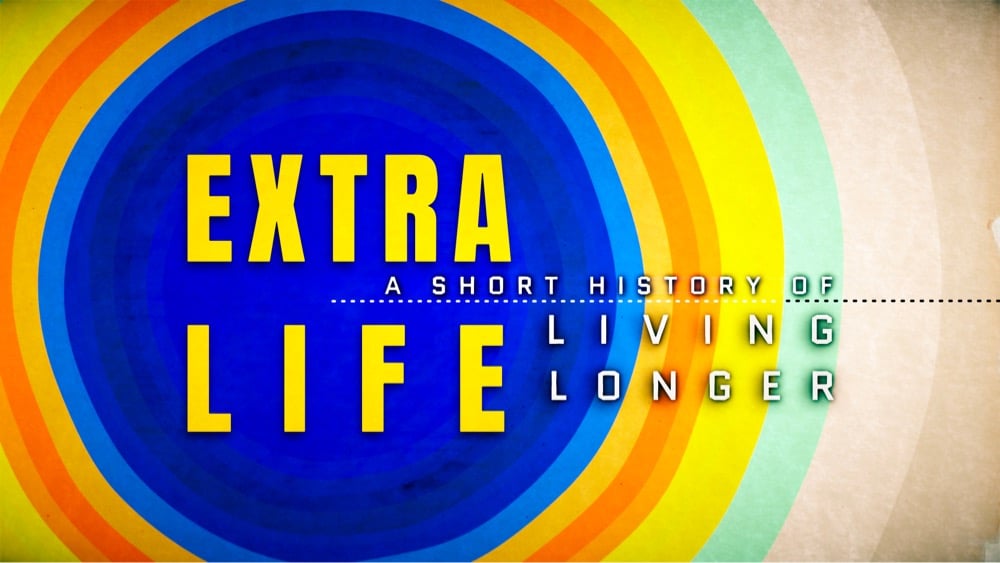
In the past 120 years, global life expectancy has risen from 32 years to 72 years, an astounding increase. In a thread announcing his new book/TV project, Steven Johnson says:
The doubling of human life expectancy is the single most important development of our era. If a newspaper came out only once a century, that extra lifespan would be the banner headline: world wars, moon landings, the Internet would all be below the fold.
Johnson will explore this century-headlining development in an upcoming PBS series (co-hosted with David Olusoga) and a book, Extra Life: A Short History of Living Longer.
A study in how meaningful change happens in society, Extra Life is an ode to the enduring power of common goals and public resources. The most fundamental progress we have experienced over the past few centuries has not come from big corporations or start-ups. It has come, instead, from activists struggling for reform; from university-based and publicly funded scientists sharing their findings open-source-style; and from nonprofit agencies spreading new innovations around the world.
Just sent out the first @kottke newsletter in ~6 months. Trying to reboot it with a leaner/meaner format.
Life Lessons From 100-Year-Olds
In this video, three English centenarians share what it’s like to live so long, lessons they’ve learned along the way, and regrets they have. I don’t particularly have the desire for long life, but if I do end up living past my life expectancy, I hope it’s with the vitality shown by these folks.
P.S. I could have sworn that I’d linked to this video before (it’s from 2016) but I can’t find it anywhere in the archives. This is similar though: How to Age Gracefully. (via open culture)
Explaining the Icy Mystery of the Dyatlov Pass
In 1959, a group of students died while on a hiking trip in the Ural Mountains. The circumstances of the incident and the way in which they died presented a mystery that has remained unsolved in the decades since.
The Dyatlov Pass incident is an intriguing unsolved mystery from the last century. In February 1959, a group of nine experienced Russian mountaineers perished during a difficult expedition in the northern Urals. A snow avalanche hypothesis was proposed, among other theories, but was found to be inconsistent with the evidence of a lower-than-usual slope angle, scarcity of avalanche signs, uncertainties about the trigger mechanism, and abnormal injuries of the victims.
Now, researchers have come up with a plausible explanation of the accident: a low-angle avalanche enabled by unusually slippery snow and high winds. From a piece in Wired about the investigation:
The cross-country skiers had actually pitched camp on a small step in the hillside, scooping away the snow to level it out. When they cut into the snowpack, they sliced through the weak layer, essentially initiating a countdown. “When you create a cut in the slope to install the tent, it’s like when you remove a retaining wall,” says Gaume, a snow physicist at the Swiss Federal Institute of Technology. The slab of denser snow now hung precariously over the camp. “All the ingredients were there,” Gaume adds. “There was a weak layer, there was a slab, and the slope angle was locally steeper than the critical angle.”
Also from the Wired piece: the researchers were inspired by the realistic snow modeling that Disney did for Frozen. (via kottke ride home)
A short history of flight attendants. Always a tough job, but now they’re dealing with anti-mask idiots. “…you have the guy eating one sunflower seed at a time so he can keep the mask off the whole flight.”
A Lego-Illustrated Guide to Covid-19 Variants
This guide to Covid-19 variants (SARS-CoV-2 viruses that have evolved changes to meaningfully alter their behavior) by Michaeleen Doucleff and Meredith Rizzo at NPR cleverly visualizes how mutations of the virus’s spike proteins help bind it more easily to ACE2 receptors on human cells. The key to the visualization is Meredith Miotke’s illustrations of the viruses using Lego pieces to represent the virus spikes and cell receptors. The usual SARS-CoV-2 has 1x1 Lego pieces that can bind with 1x2 pieces, like so:

But, as everyone who has ever worked with a Lego set knows, a 1x1 piece stuck to a 1x2 piece is not super stable. So when a version of the virus with a 1x2 piece shows up, it’s able to form a better connection to the 1x2 receptor:

The analogy breaks down if you look too hard at it1 but for many people, it can be a quick way to get the gist of the mechanism at work here. (via @EricTopol)
This is a huge pet peeve of mine when people try to poke holes in analogies: by definition, all analogies break down if you examine them too deeply. An analogy is a comparison of two different things that are similar in significant respects. If they were the same in every respect, it’s not an analogy…you’d just be describing one thing.↩
Why You Should Take Any Vaccine by @zeynep. “Since the beginning of the trials, all trials, there has not been a single death or hospitalization among people vaccinated. Not one. Zero.”
XOXO has announced that there will be no festival in 2021. “It’s just not clear that it will be safe for us to gather again by September.” A bummer, but the right move.
Tadpoles: The Big Little Migration
For four years, Maxwel Hohn filmed the movements of millions of tadpoles in a small lake in British Columbia, resulting in an 8-minute short film called Tadpoles: The Big Little Migration. The underwater cinematography in this is absolutely incredible.
People don’t think of tadpoles as being photogenic, but when you take the time to look at their features, they’re actually very cute. They have a permanent smile on their face that you form an instant connection with. Witnessing their journey each day, there’s a strong emotional bond I can’t help but feel.
Hohn’s work here is proof that nature is infinitely fascinating and worthy of attention, even beyond the bounds of nature documentaries about charismatic megafauna. (via the kid should see this)
Delightful Acapella Versions of Familiar Jingles
This is a fun discovery, via Laura Olin’s newsletter: a Korean acapella group called Maytree that does impressions of famous cultural jingles and sound effects. In this video, they perform a number of movie intro tunes (20th Century Fox, Paramount, etc.):
Watch until the end…the Netflix one is *kisses fingers*. Here they do the music from Super Mario Bros, including the overworld, underworld, and underwater themes:
Tetris (which gets unexpectedly dramatic):
And finally, a bunch of sounds and jingles from Microsoft Windows:
3:45 PM
3:45 PM is CalArts student Alisha Liu’s second-year film about a lovely day in the park interrupted by an existential case of the Sunday scaries. The animation in this is lovely, particularly in the overhead sequences when things get abstract. I think this is my favorite shot:

There’s just enough information here to convey to the viewer that these are cars in a parking lot — plus a little bit more, so that individual types of cars are perceptible. This is a really good implementation by Liu of the type of abstraction discussed by Scott McCloud in Understanding Comics. (via colossal)
Unfortunately, this sort of macho we’re-gonna-kick-your-ass posturing (but “it’s a joke!”) is probably necessary to get Americans to take electric vehicles seriously. But hey, Awkwafina!
“That Could Have Been Me”: The People Derek Chauvin Choked Before George Floyd. “They describe an officer quick to use force and callous about their pain.”
Testing Out a Giant Bell
If you’re anything like me and all you want to do today is watch some guys hand-ringing a giant bell, here you go. If we click play at the same time, we can watch it together. Ready? 3…2…1…go.
See also The Otherworldly Sounds of a Giant Gong. (via @MachinePix)
On Feb 1, Oregon decriminalized possession of small amounts of all drugs. Instead of punishing people, the state will offer “greatly increased access” to services like treatment and recovery.
Last Night’s Northern Lights

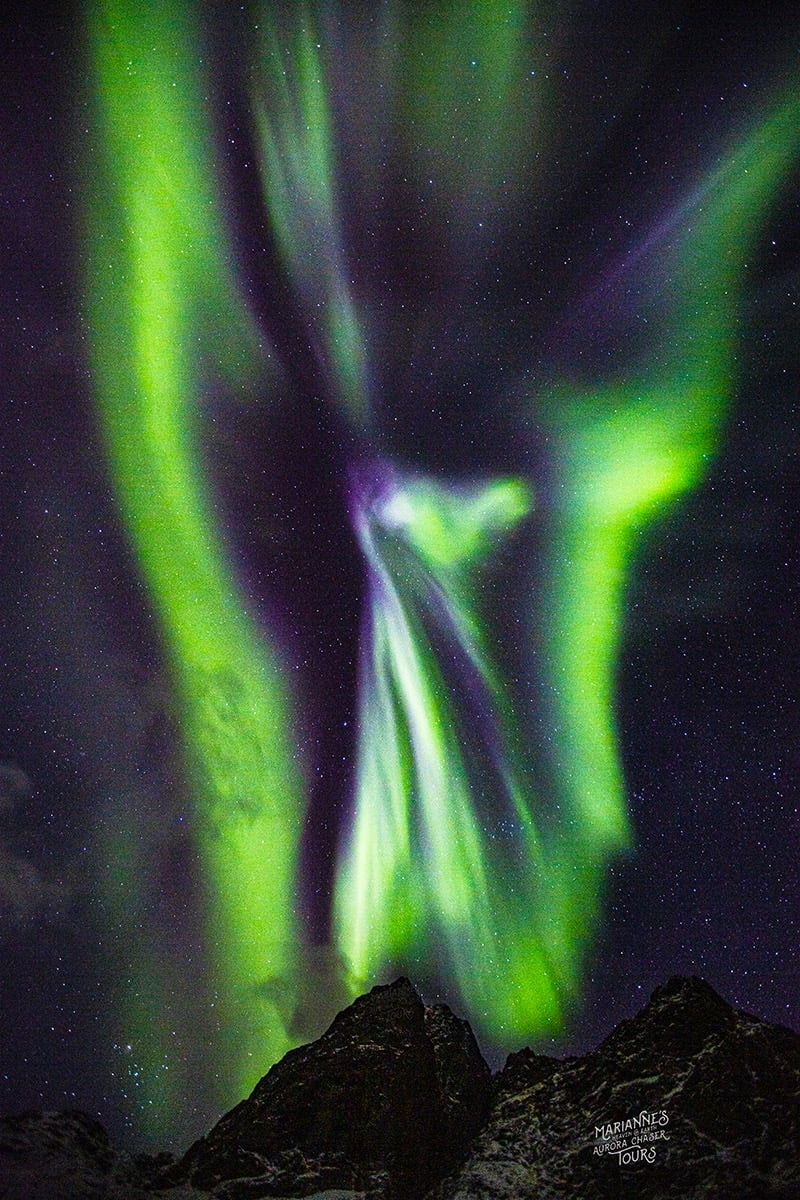

The aurora borealis was amazing last night in Norway. The top photo is from Markus Varik and the bottom two are from Marianne Bergli, who runs a company that offers tours of the aurora. (via @AvatarDomy)
Out now: Four Hundred Souls: A Community History of African America, 1619-2019, edited by Ibram X. Kendi & Keisha N. Blain. The contributors list for this is like an all-star team.
A collection of videos of people painting. “Watching others paint is relaxing, even when the painter is not the beloved Bob Ross and his happy trees and friendly squirrels.”
Amazon watcher @tcarmody on what’s next for Bezos & Amazon. “He is not going to go away to start an apple butter farm or retire away to Xanadu like Charles Foster Kane. That’s not how this works.”
A Vintage Paper Airplane Collection



Harry Everett Smith was an artist and a collector. One of the things he collected was paper airplanes — he picked up hundreds of them from the streets and buildings of New York between 1961 and 1983.
Smith was “always, always, always looking” for new airplanes, one friend said: “He would run out in front of the cabs to get them, you know, before they got run over. I remember one time we saw one in the air and he was just running everywhere trying to figure out where it was going to be. He was just, like, out of his mind, completely. He couldn’t believe that he’d seen one. Someone, I guess, shot it from an upstairs building.”
The whereabouts of much of his collection is presently unknown, but photos of part of the collection were compiled into a book: Paper Airplanes: The Collections of Harry Smith: Catalogue Raisonné, Volume I. You can see more of Smith’s collection at the New Yorker and SFO Museum. (via moss & fog)
Analysis of Jan 6 terrorists. “The overwhelming reason for action, cited again and again in court documents, was that arrestees were following Trump’s orders to keep Congress from certifying Joe Biden as the presidential-election winner.”
How Reporters Should Cover Government Going Forward
Press Watch’s Dan Froomkin imagines a speech that new editoral leadership at large American newspapers should give to their political reporters.
It’s impossible to look out on the current state of political discourse in this country and think that we are succeeding in our core mission of creating an informed electorate.
It’s impossible to look out at the looming and in some cases existential challenges facing our republic and our globe — among them the pandemic, climate change, income inequality, racial injustice, the rise of disinformation and ethnic nationalism — and think that it’s OK for us to just keep doing what we’ve been doing.
He continues:
First of all, we’re going to rebrand you. Effective today, you are no longer political reporters (and editors); you are government reporters (and editors). That’s an important distinction, because it frees you to cover what is happening in Washington in the context of whether it is serving the people well, rather than which party is winning.
Historically, we have allowed our political journalism to be framed by the two parties. That has always created huge distortions, but never like it does today. Two-party framing limits us to covering what the leaders of those two sides consider in their interests. And, because it is appropriately not our job to take sides in partisan politics, we have felt an obligation to treat them both more or less equally.
Both parties are corrupted by money, which has badly perverted the debate for a long time. But one party, you have certainly noticed, has over the last decade or two descended into a froth of racism, grievance and reality-denial. Asking you to triangulate between today’s Democrats and today’s Republicans is effectively asking you to lobotomize yourself. I’m against that.
Defining our job as “not taking sides between the two parties” has also empowered bad-faith critics to accuse us of bias when we are simply calling out the truth. We will not take sides with one political party or the other, ever. But we will proudly, enthusiastically, take the side of wide-ranging, fact-based debate.
Government reporters. Yes, exactly. Worth reading in its entirety.
An Israeli human-rights organization has designated Israel an apartheid regime. “The paper argues that the Israeli regime of apartheid rests on four pillars: citizenship, land, freedom of movement, and political participation.”
Newly Released Footage of a 2007 Daft Punk Concert
As a post-Tr*mp gift to the world, YouTube user Johnny Airbag uploaded a “previously uncirculated” full-length video of a Daft Punk concert in Chicago in 2007. This was from the first night of Lollapalooza and was one of the stops on the duo’s Alive tour, which later resulted in their Alive 2007 album (recorded live in Paris a few weeks before the Chicago show). You can find bootleg recordings of several of their 2007 shows on Soundcloud.
The COVID Tracking Project will stop its work in early March because the US government is finally doing this vital task. A huge HUGE thank you to the @COVID19Tracking team for their service.
Home Movie: The Princess Bride
In June and July of 2020, Jason Reitman directed an at-home reenactment of the entirety of The Princess Bride featuring too many notable actors to list here. It ran in 10 installments on doomed streaming platform Quibi — which is why you probably haven’t heard of it — but it is fantastic. Mixed media, multiple actors playing all the roles, Fred Savage and Cary Elwes reprising their roles from the original, the star power & talent, the fact that they got permission to do it — it’s just so weird and good. You can watch the whole thing embedded above.
Ok, ok, here’s just a few of the actors who appear: Adam Sandler (as The Grandfather), Jon Hamm (Westley), Zoe Saldana (Buttercup), Penelope Cruz (Prince Humperdinck), Pedro Pascal (Inigo Montoya), Shaquille O’Neal (Fezzik), Charlize Theron (Fezzik), Andy Serkis (Count Rugen). And Carl Reiner as The Grandfather in his final onscreen role — he died just three days after recording his part.
I know you’re perhaps over the whole quarantine production thing, but this is worth checking out. This movie was done to raise money for José Andrés’ World Central Kitchen, so if you enjoyed it, join me in sending them some money to enable their essential work. (via @mathowie)
A short interview with Hayao Miyazaki conducted during his daily ritual of tidying up the street outside his house. “I rarely watch other things. I don’t watch TV, I don’t watch movies. I’m a retired old man picking up trash.”
Kids Talk About Gaming During the Pandemic
Concerned that recent articles like this one about screen time panic were not adequately capturing the perspective of the kids themselves, Anne Helen Petersen asked a group of parents and caregivers to conduct interviews with kids about gaming and screen time.
So I wanted to hear them talk about their own relationship to the games they play: what they like about it, when they like to play, how games make them feel, who they like to play with, and how they respond to anxiety about their gaming/screen time.
I pulled out a few quotes from the kids but the whole thing is worth a read.
When people say that screentime is bad, I want to say, hey, I want to be more social at the moment and it’s hard to do that right now and I can only do it with technology.
I feel annoyed and angry with the “too much time playing video games argument,” because people don’t really understand. They don’t play these games. They don’t have any experience themselves, and they’re judging what we do based on what they’ve heard or read. Gaming is so new that there’s no conclusive evidence yet to prove if it’s actually harmful. It feels like they’re just trying to control us and tell us what to do.
When adults say that kids play too many video games it makes me kinda angry and confused. We’re already stuck at home and it feels like they’re trying to cut us off from our friends even more. So it’s kinda annoying.
Honestly I don’t really worry about spending too much time game at all. I already spend almost all my time on there anyway and it doesn’t seem to have any negative side effects. Key word “seem.” People need to make sure they don’t get correlation and causation mixed together.
Like many other parents, we’ve been struggling mightily with games, devices, and screen time during the pandemic (although for us this is an issue that carried over from The Before Times). As Petersen says, this is a complicated challenge and I am sympathetic to both the arguments these kids make (which mirror what I’ve heard from my kids) and parental concerns about too much time on devices (the effects of which I’ve seen in my kids).
What we’ve done, imperfectly, is prioritize the social aspect of gaming time — playing with friends, gaming clubs, playing together in the living room — over manically grinding away for hours on end in a dark room. We try to meet them on their terms — ask them what they did today in Minecraft or Among Us, show real interest about their progress, etc. I empathize and commiserate when I can — I grew up playing video games and I still get a little too into them on my phone or iPad sometimes. But we also encourage them to get outside and move their bodies, find ways to connect with friends that don’t involve killing virtual people, and try to get them to recognize some of the worst effects of too much screen time (they do, if you catch them at the right moment about it). Keeping a good connection with your kids around gaming & screens is the key bit, I think. With that in hand, in theory it’s at least possible to keep kids and parents alike safe and sane during all of this.
The second volume of Jason Polan’s Every Person in New York is being published soon; preorder it here. “He estimated having drawn over 50,000 people and as he stated ‘I still have a bit to go.’”
Hypocrisy and the Filibuster
For the NY Times, Jamelle Bouie writes about the history of the filibuster in the Senate and how it (unsurprisingly) differs from Mitch McConnell’s comments about it.
The truth is that the filibuster was an accident; an extra-constitutional innovation that lay dormant for a generation after its unintentional creation during the Jefferson administration. For most of the Senate’s history after the Civil War, filibusters were rare, deployed as the Southern weapon of choice against civil rights legislation, and an occasional tool of partisan obstruction.
Far from necessary, the filibuster is extraneous. Everything it is said to encourage — debate, deliberation, consensus building — is already accomplished by the structure of the chamber itself, insofar as it happens at all.
In the form it takes today, the filibuster doesn’t make the Senate work the way the framers intended. Instead, it makes the Senate a nearly insurmountable obstacle to most legislative business. And that, in turn, has made Congress inert and dysfunctional to the point of disrupting the constitutional balance of power.
I’d like to highlight something else from the article’s title and reiterated in the text by Bouie: “I’m not actually that interested in McConnell’s hypocrisy.” Yes, exactly. I see a lot of calling-out of the hypocrisies of “the other side”1 on social media and it just seems worthless to me at this point. This sort of thing just doesn’t work when you’re dealing with people who are cynical and without shame in a very polarized media environment. Like, if you’ve read anything about McConnell at all, you know that he cares about power and he’s going to say what he needs to say to get it or keep it, regardless of self-contradiction. Pointing out his flip-flops doesn’t accomplish anything because he’s not actually switching his position! He didn’t really believe the thing he said before and he doesn’t really believe the thing he’s saying now. He just wants what he wants. Focusing on the facts and historical context of the issue, as Bouie does here (and in his explanation of the Electoral College on You’re Wrong About), is the way to go.
Examples: “The ‘pro life’ party did nothing while 400,000 people died from the pandemic.” and “If you’re ‘pro choice’, why do you want to limit the 2nd amendment right of people to carry guns?” Etc. etc.↩




Stay Connected